While in Austria, Jennifer and I stayed several days in the medieval city of Melk. We had a room at the Hotel Zur Post Melk (the former post office), which was our homebase for touring the sights of the renowned Wachau Valley, a UNESCO World Heritage site and well known for its many vineyards.
Located at the confluence of Danube and Melk Rivers, Melk was an important river city back when passage on the Danube was the primary means of travel through the region. It reportedly began as a Roman garrison (one of many along the Danube - the border between the Roman Empire and the barbarian lands to the north), and was first mentioned as a town in AD 831.
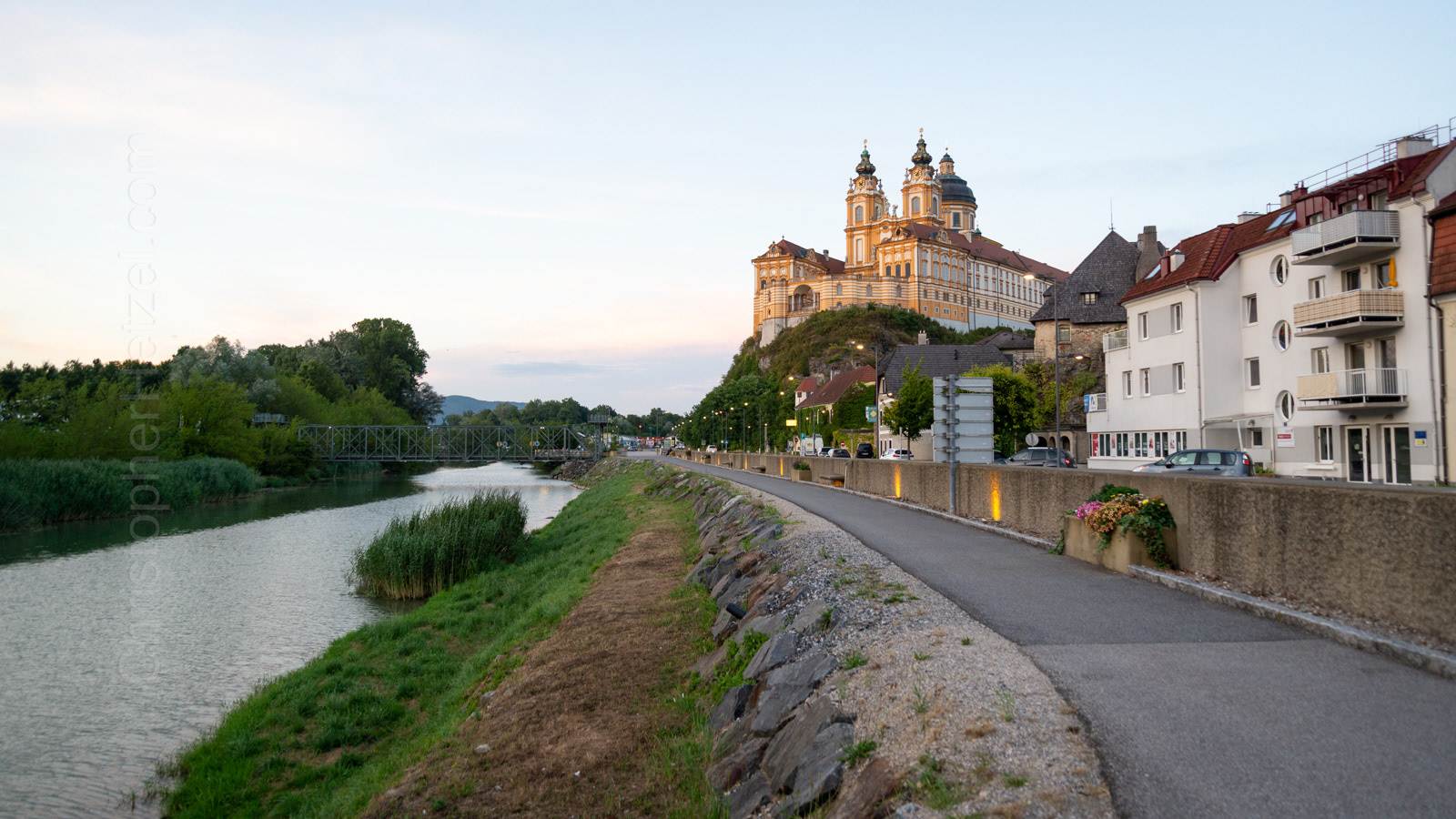
Melk Riverfront with Melk Abbey on the bluff.
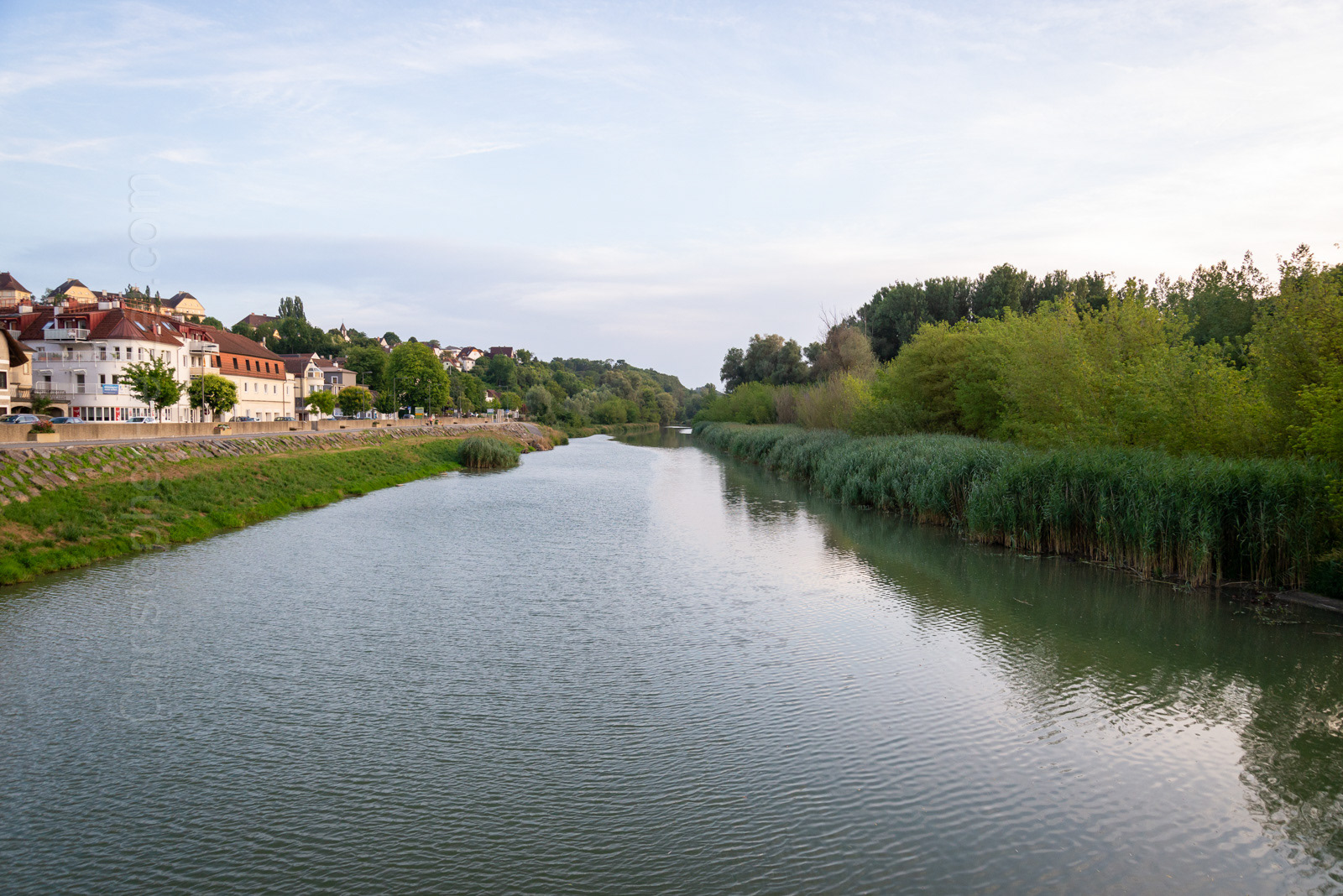
View of the Melk River.
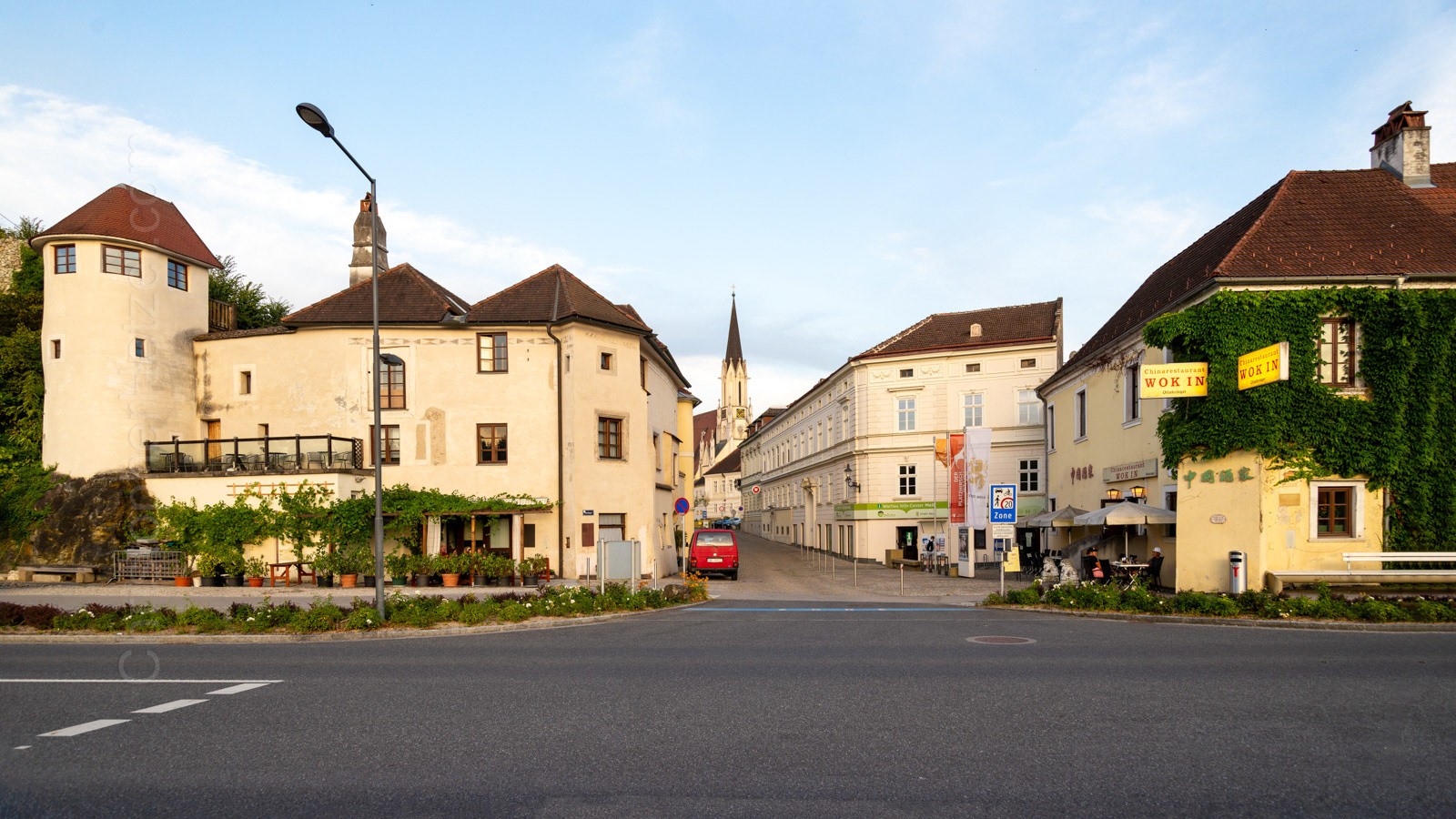
The building on the left contains a remnant of the town's medieval walls. There was once a prominent gate here, leading into the city from the river. The church in the distance stands on the town square. The river is behind me.
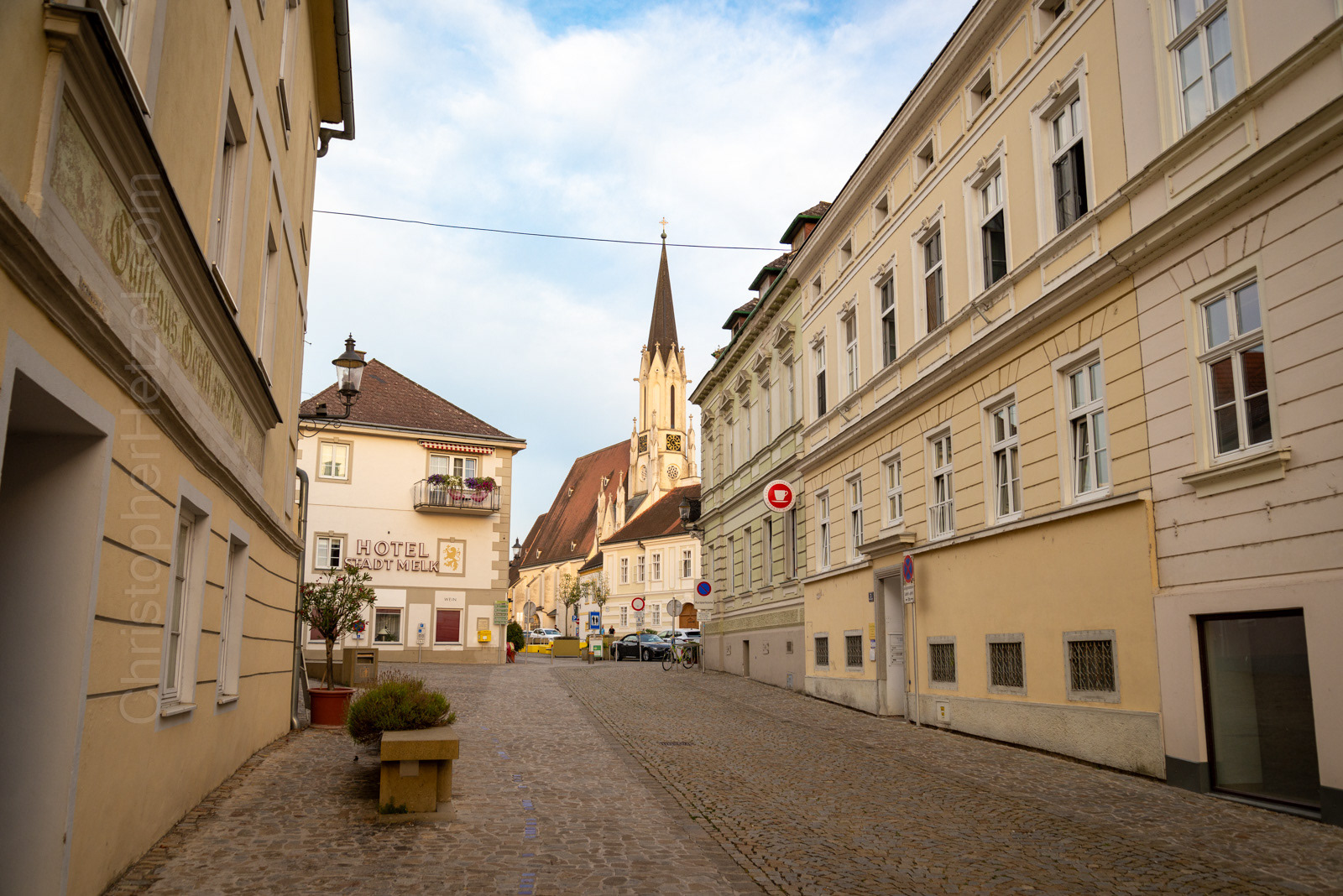
Passing through the town from the river to the town square.

The Parish Church of the Assumption of Mary (built 1481; tower rebuilt 1868) in Melk town square.
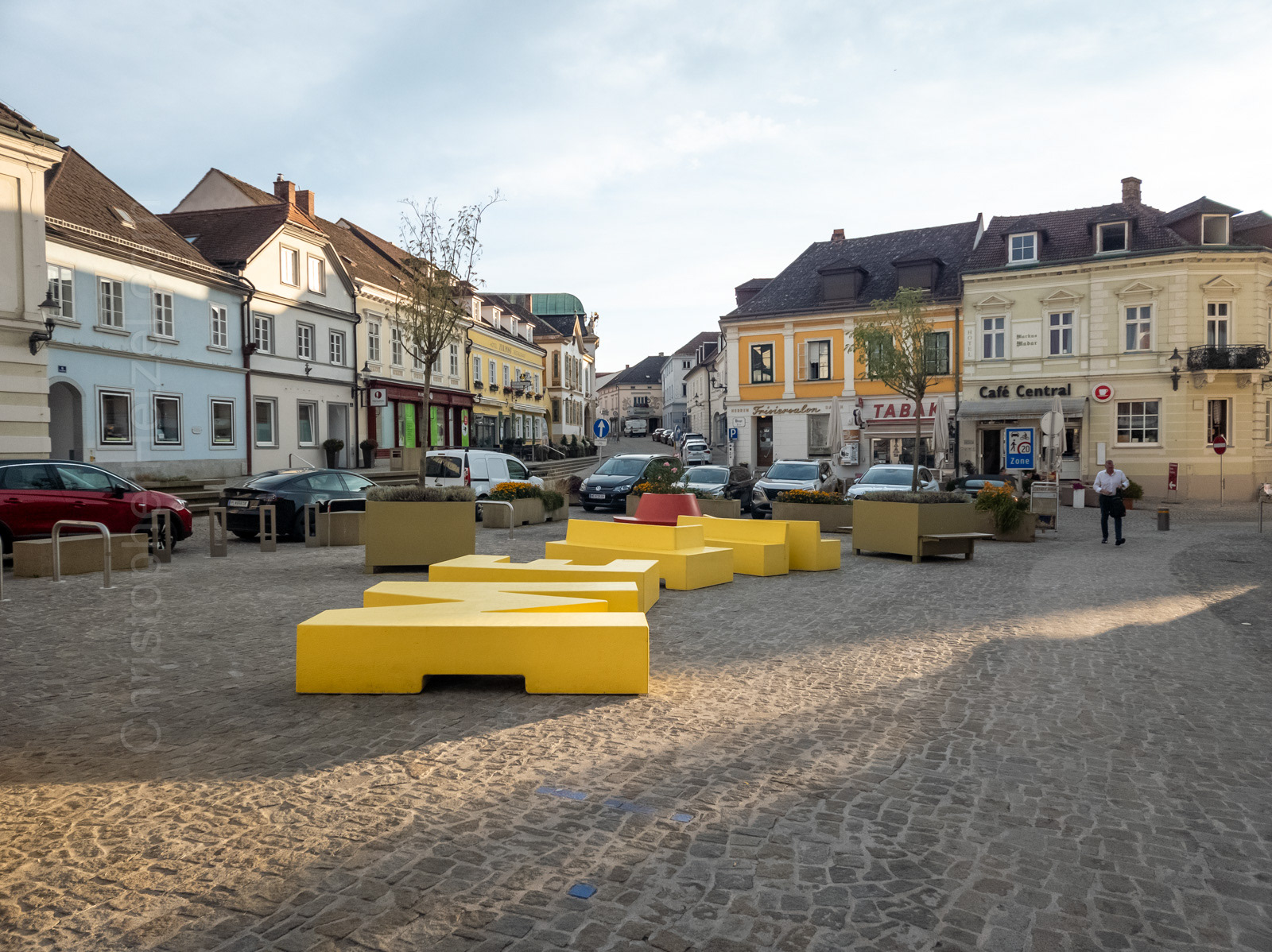
The Melk town square.
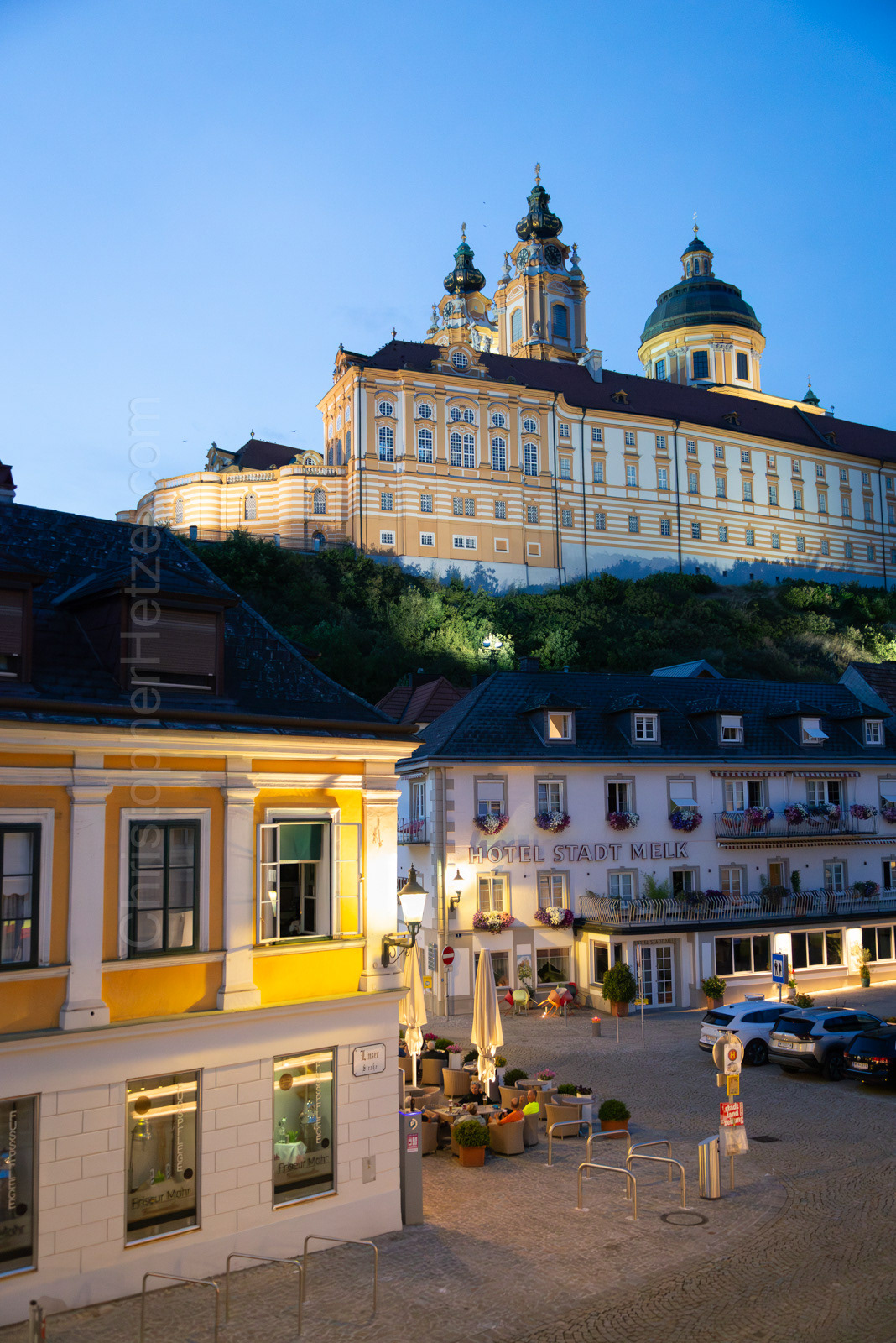
View of Melk Abbey at night.

Melk Abbey and the town square, as viewed from our hotel room.

Our accommodation, the Hotel Zur Post, and containing one of the most popular restaurants and pubs in town.

Haus auf dem Stein (House on the Stone) - Originally a tower forming part of Melk's 16th century town walls, it was eventually converted to a dwelling with splendid views of the Danube. After World War I, painter Walter Prinzl (1891-1937) acquired the run-down house and used it as his studio. He is known for his paintings of the Wachau Valley region, as well as Italy, Prague, and towns in the Alps.
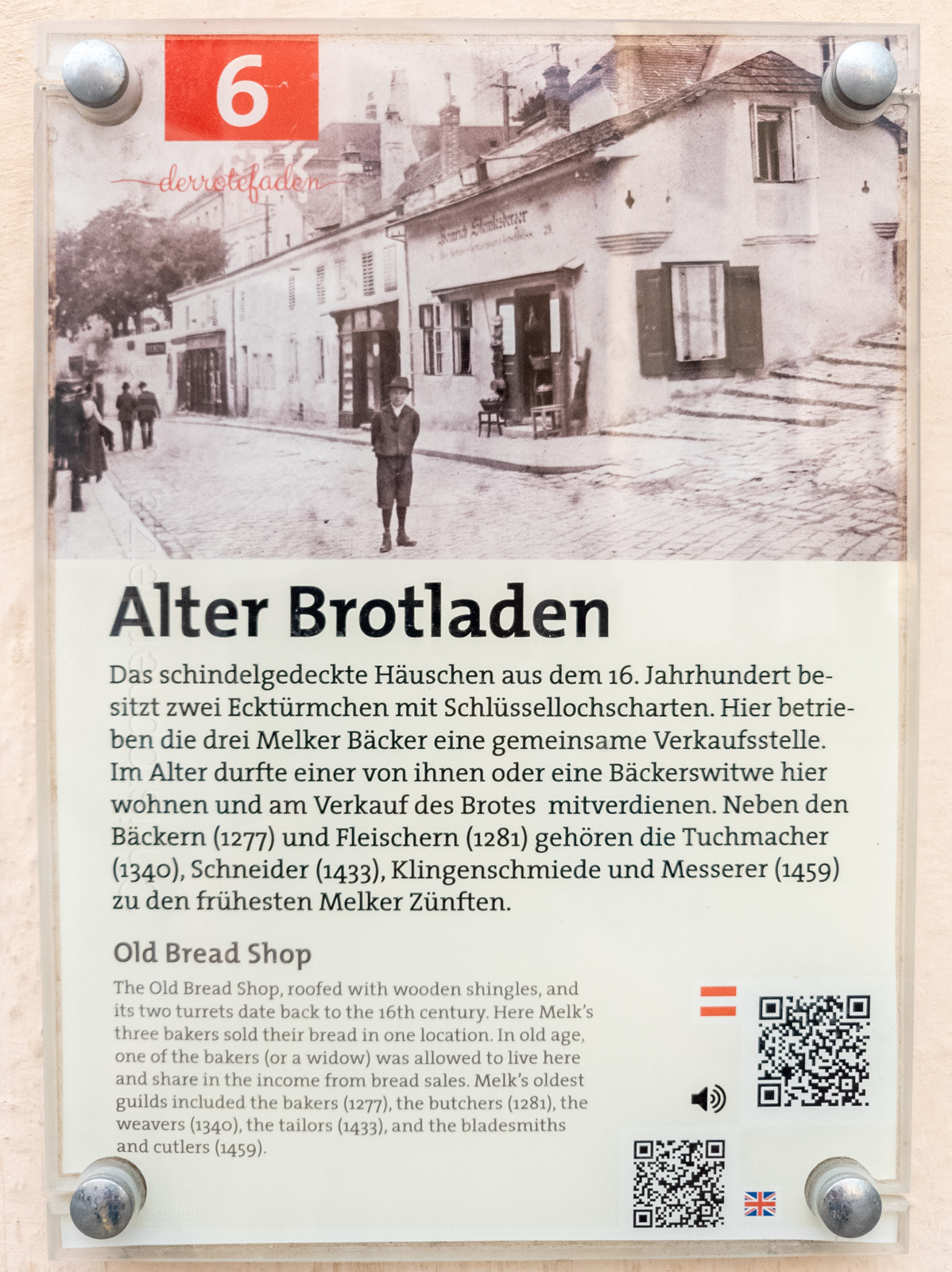
An interesting history. See the next image for a view of the building today.

Alter Brotladen (Old Bread Shop) - This building dates back to the 16th century. Here, Melk's three bakers sold their bread in one location.
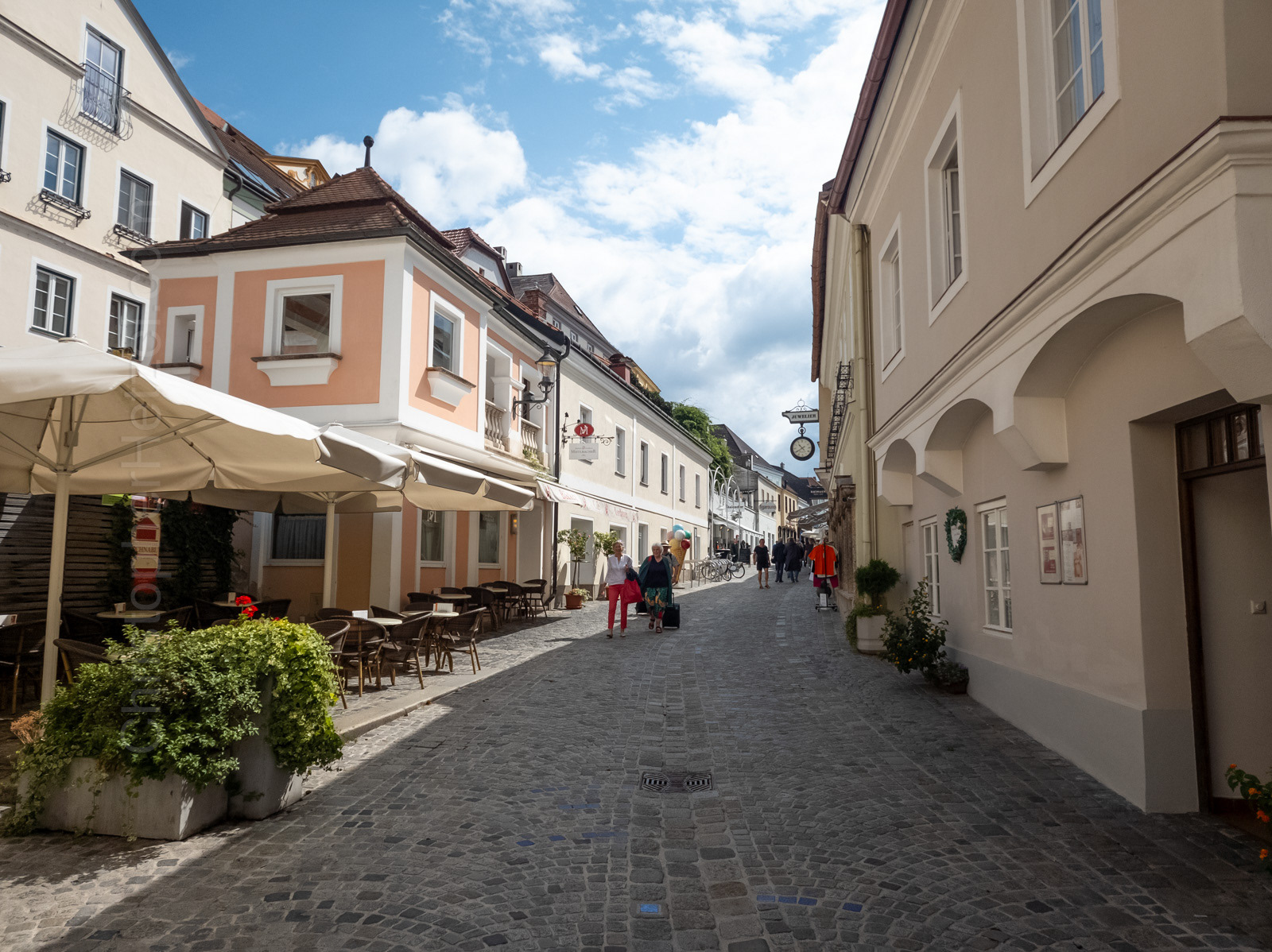

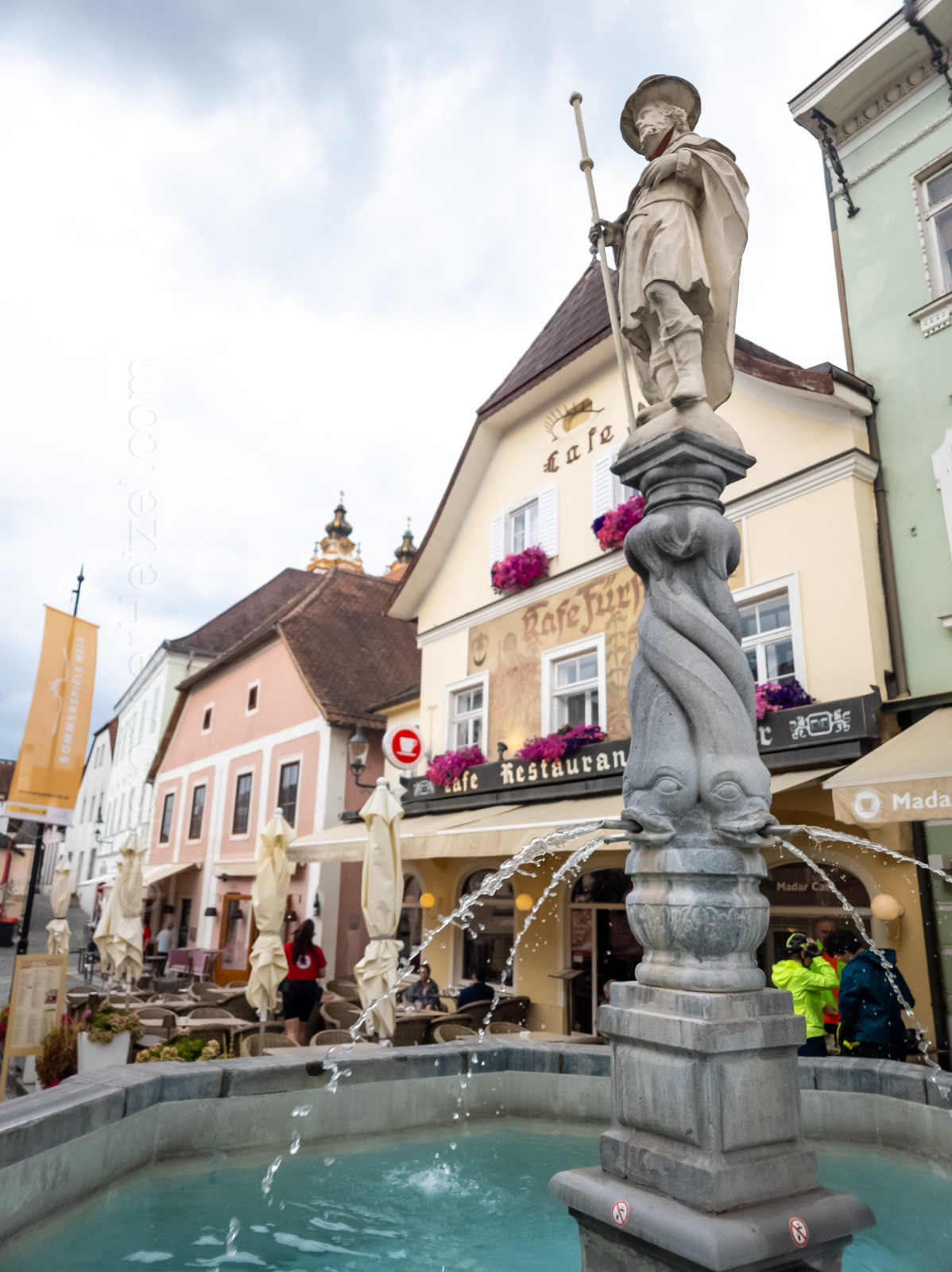
The fountain of St. Koloman in the center of old Melk. It represents the English pilgrim saint who died in 1012 and was buried in the Abbey. The fountain dates back to 1687 and was donated in 1722 by the abbot to the citizens.


A view of Melk from the Melk Abbey, the yellow building in the center is where we stayed.
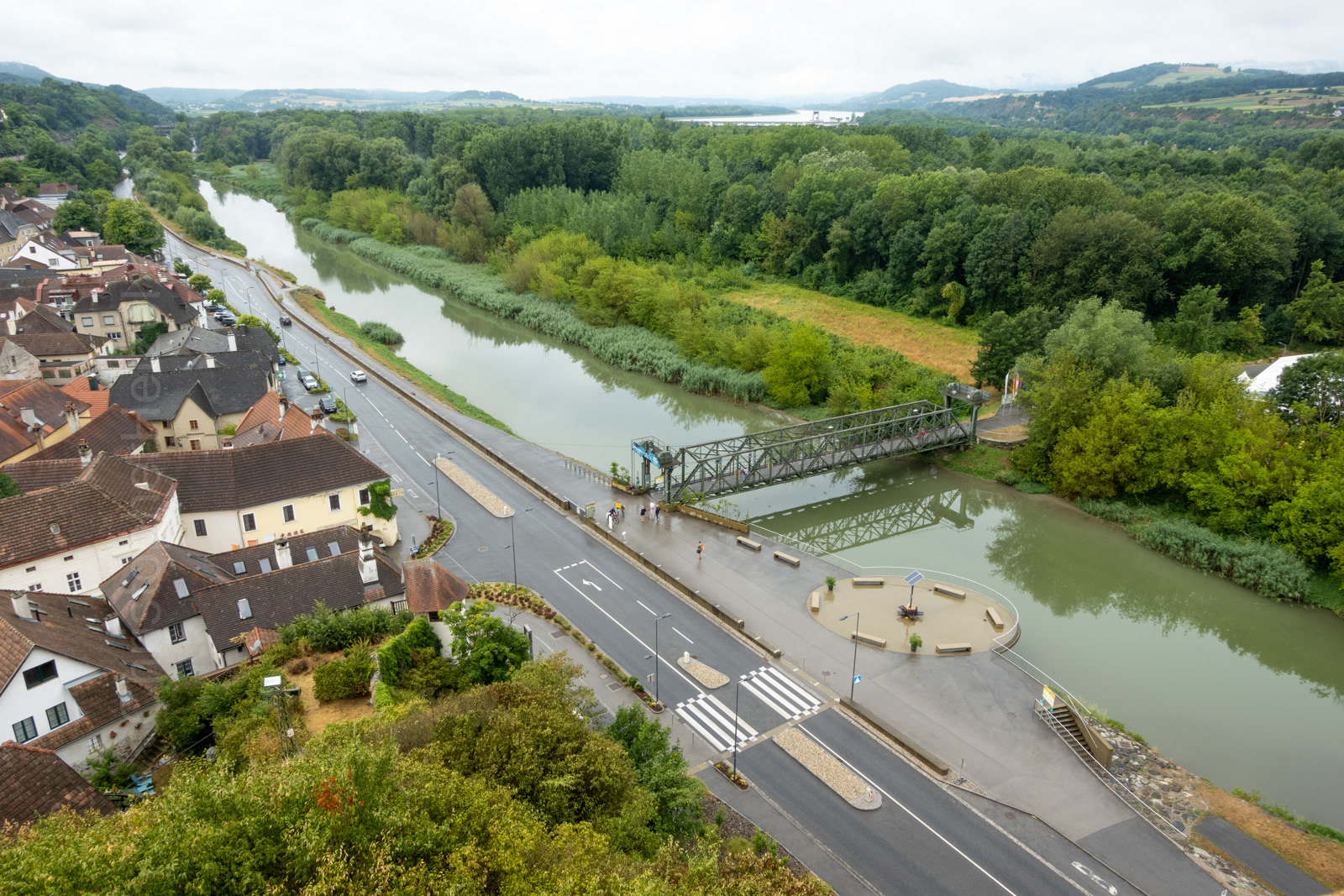
Melk River viewed from Abbey.
Melk Abbey
Today, Melk is best known for its most prominent landmark - the massive, Baroque-style monastery that dominates its heights. In AD 976, Leopold I of House Babenberg became Margrave of Austria (a part of the Holy Roman Empire), and he established his castle-residence atop Melk's high bluff in Melk. The Babenbergs resided there until AD 1101, after which Leopold II gave the castle and its surrounding lands to the Benedictine Order in AD 1111.
The Benedictines expanded the former castle-residence over several centuries, resulting in today's Melk Abbey. The abbey was enlarged and fortified in the 14th century, but most of its palatial Baroque buildings were constructed between 1702 and 1736 by Austrian architect Jakob Prandtauer. The complex includes: the former royal residence, a monastic library, a school, the large abbey church, and a series of expansive courtyards and gardens.
The monastic school, the Stiftsgymnasium Melk, was founded in the 12th century and today remains the oldest continuously operating school in Austria, serving nearly 900 students annually. The monastic library, meanwhile, had an active scriptorium and is renowned for its extensive collection of medieval manuscripts.

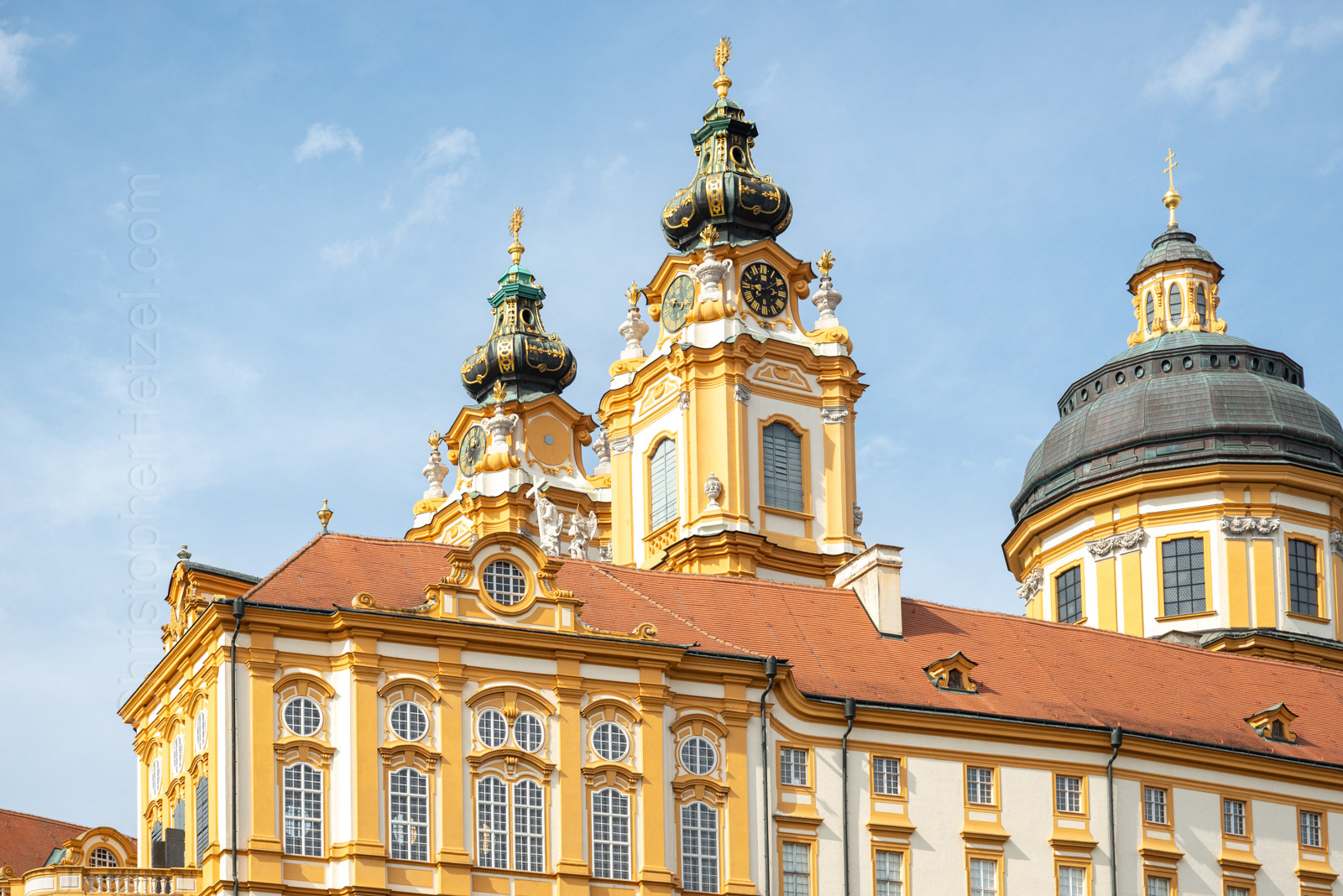
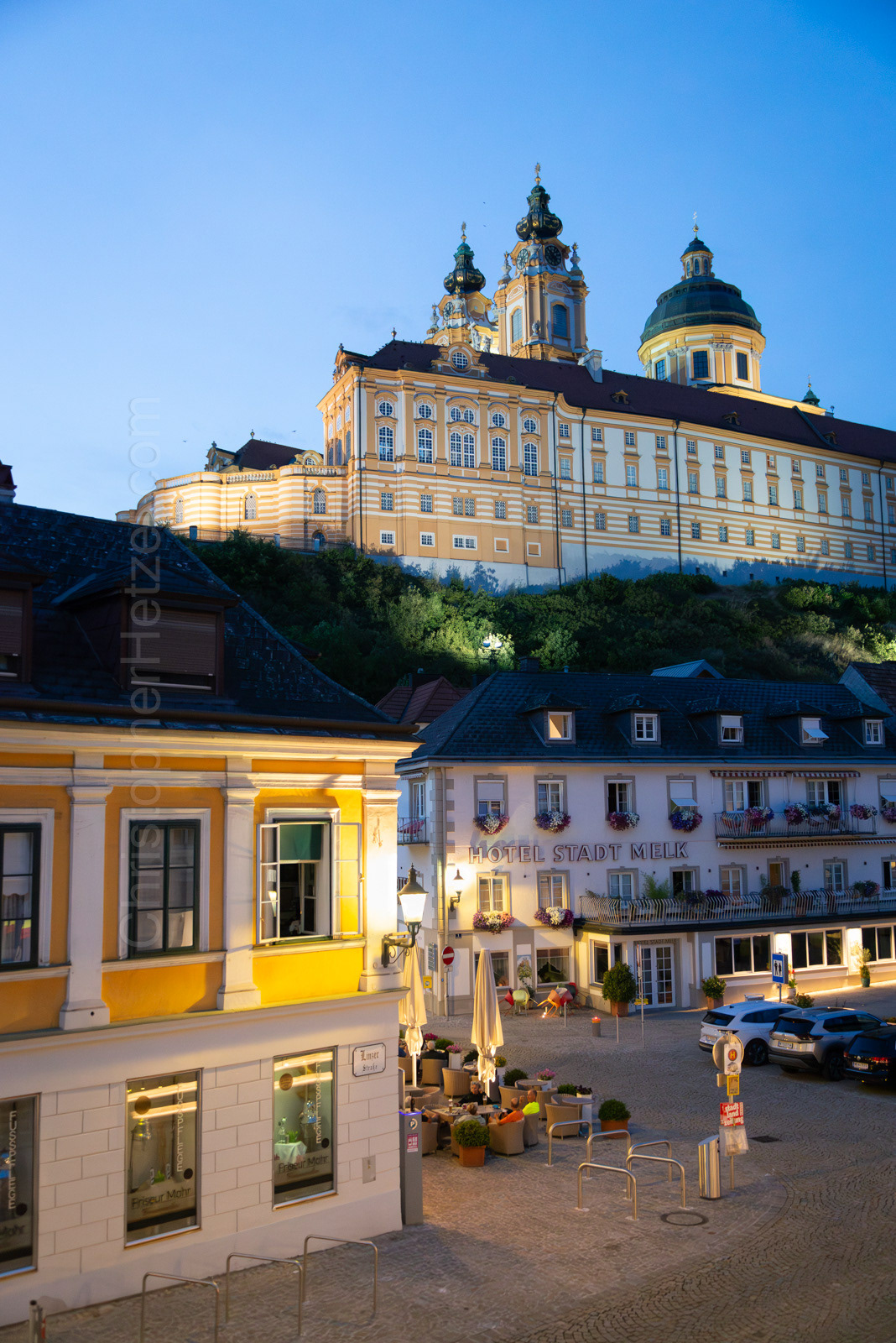

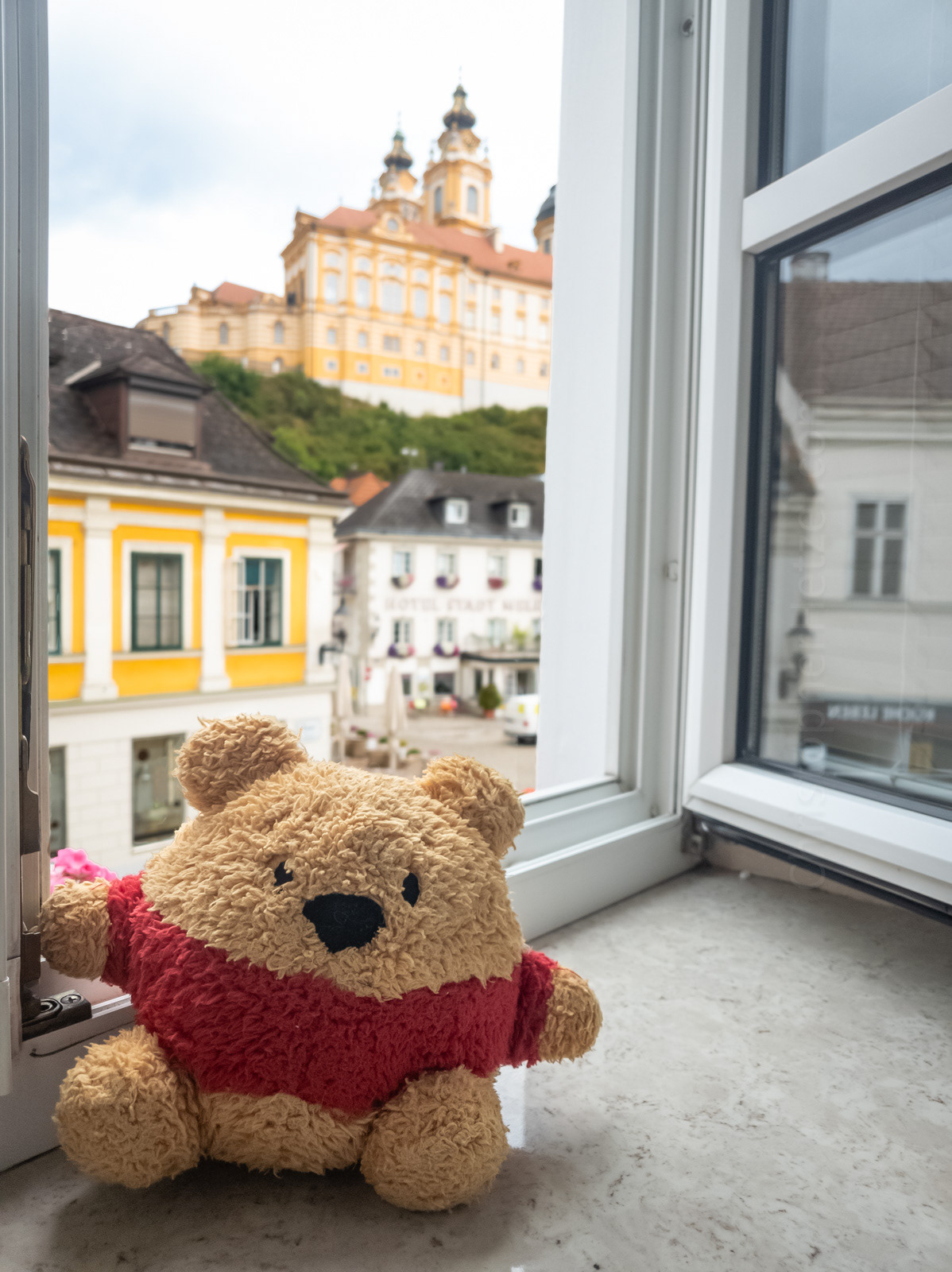
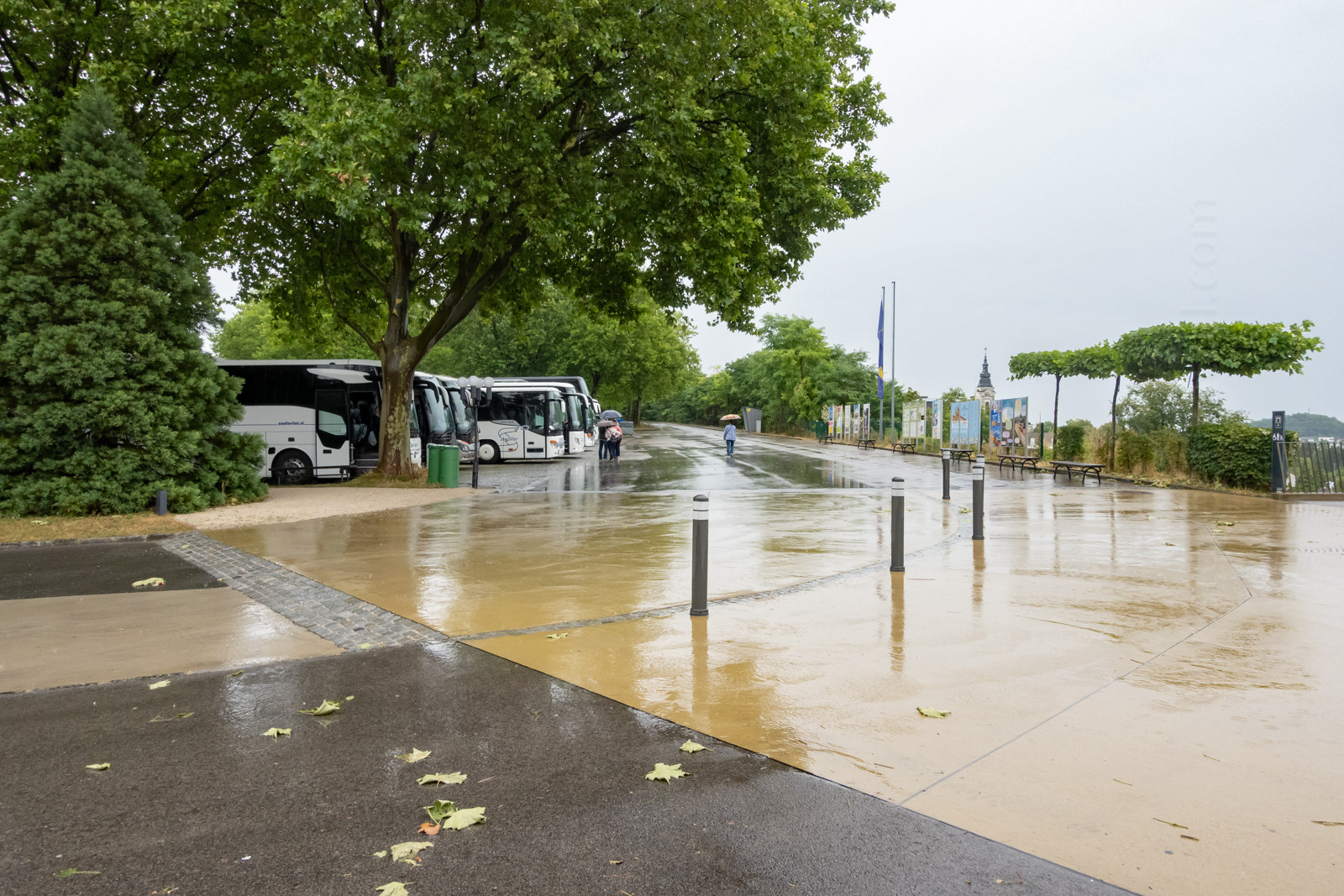
Starting at the parking lot.

A view over Melk.
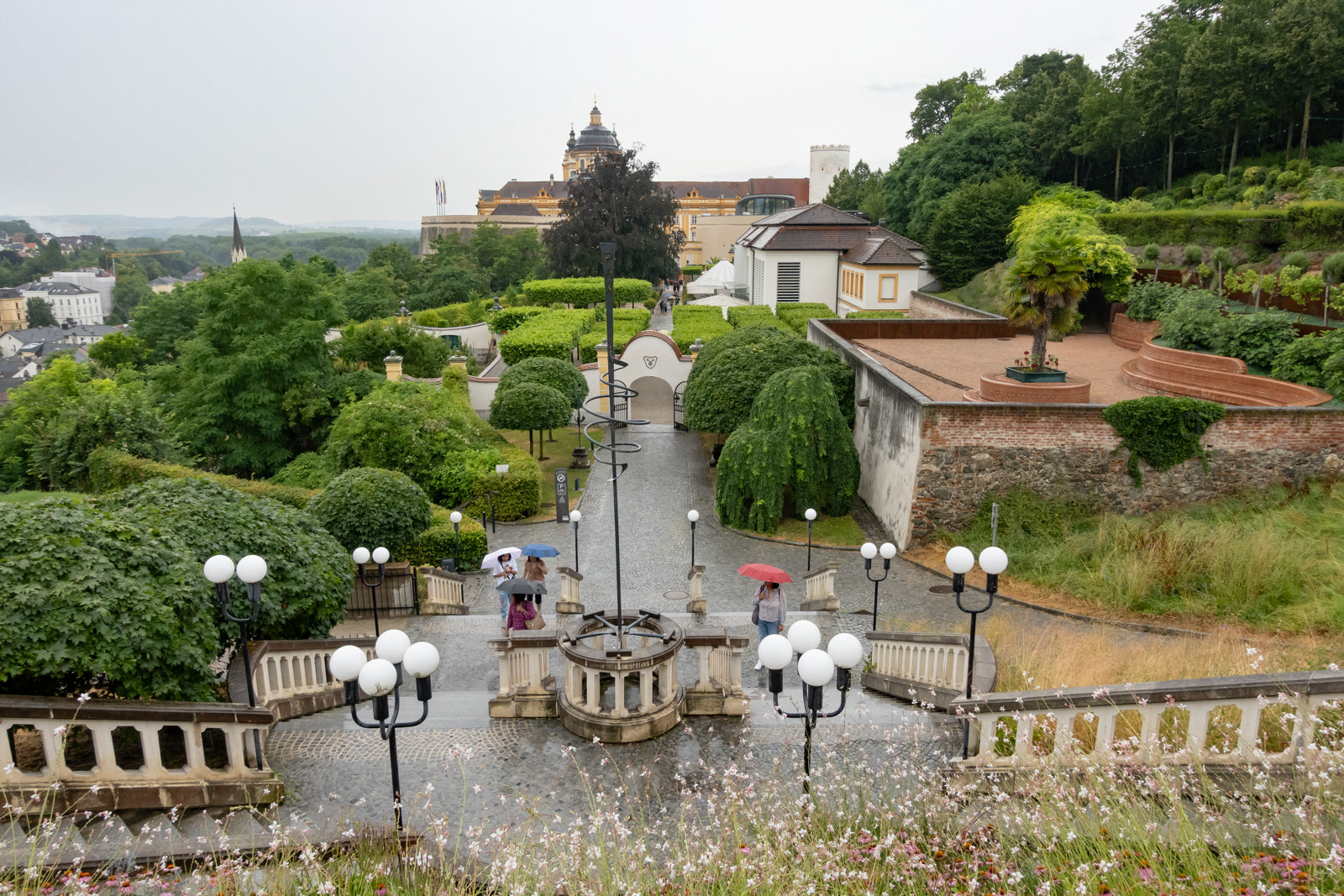
The walk to the Abbey entrance.
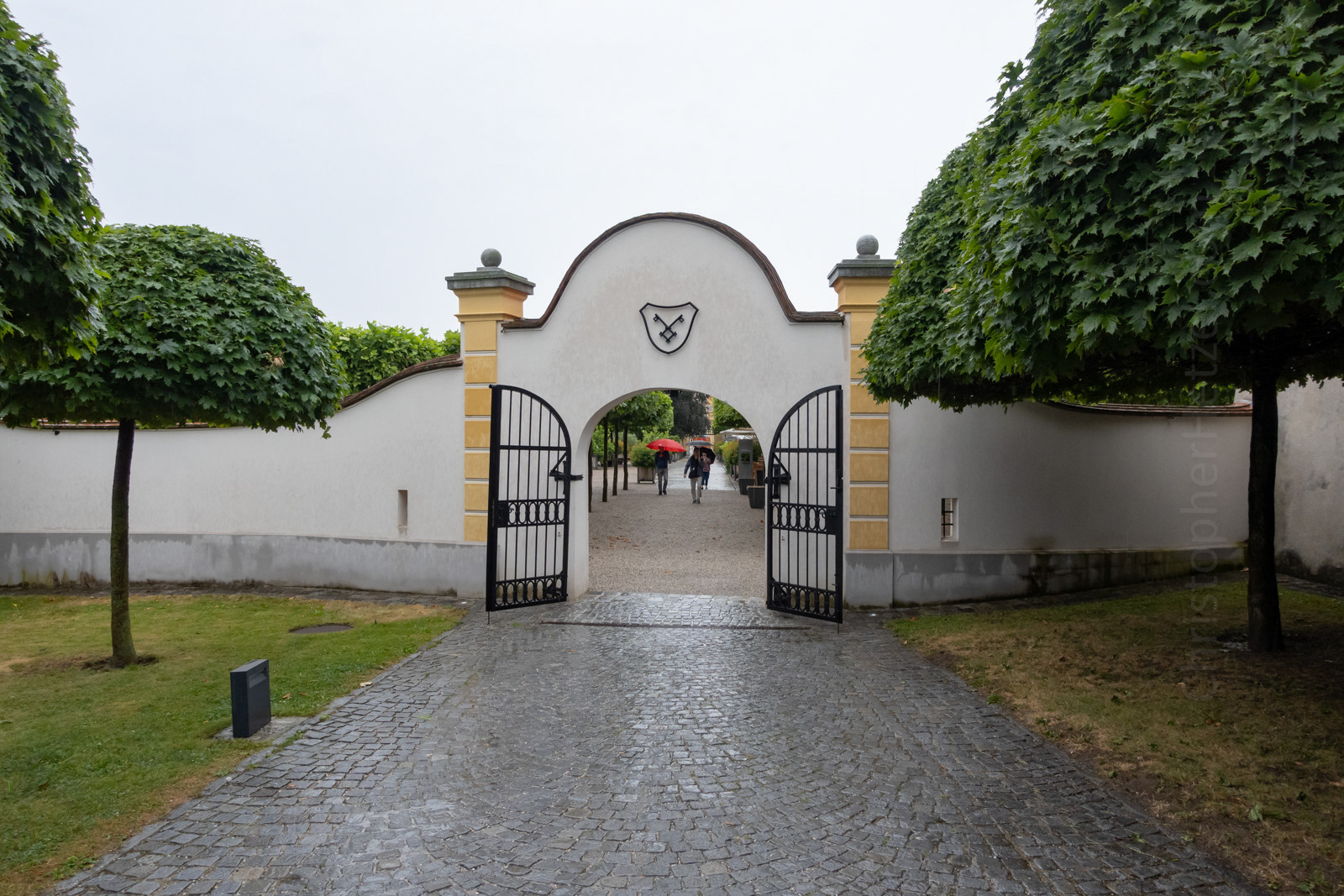
Entrance to the Abbey grounds.

A pleasant garden area across from a nice café on the grounds.
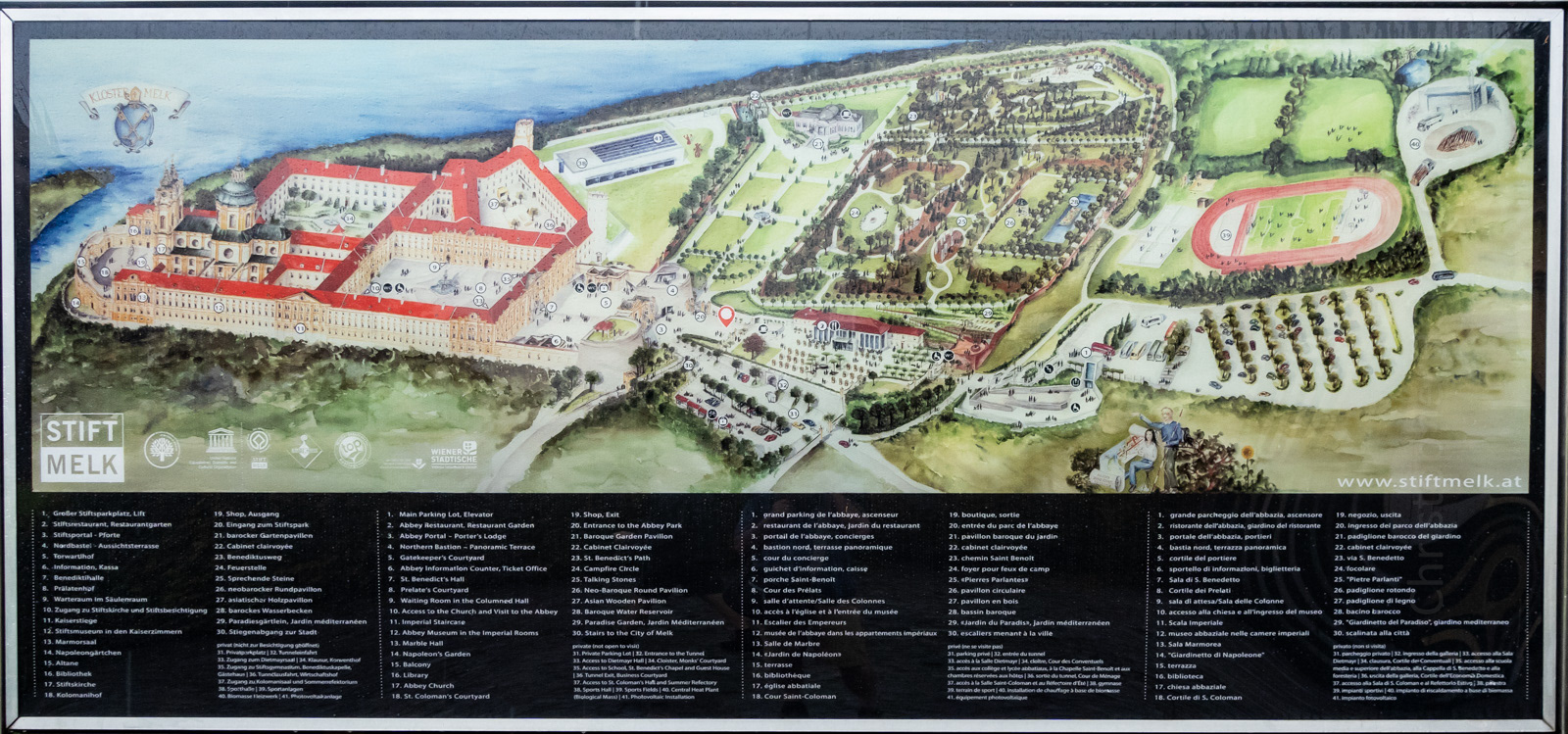
A map of the abbey grounds, showing just how expansive they are.

Formal entrance to the monastery, flanked by two large bastions.
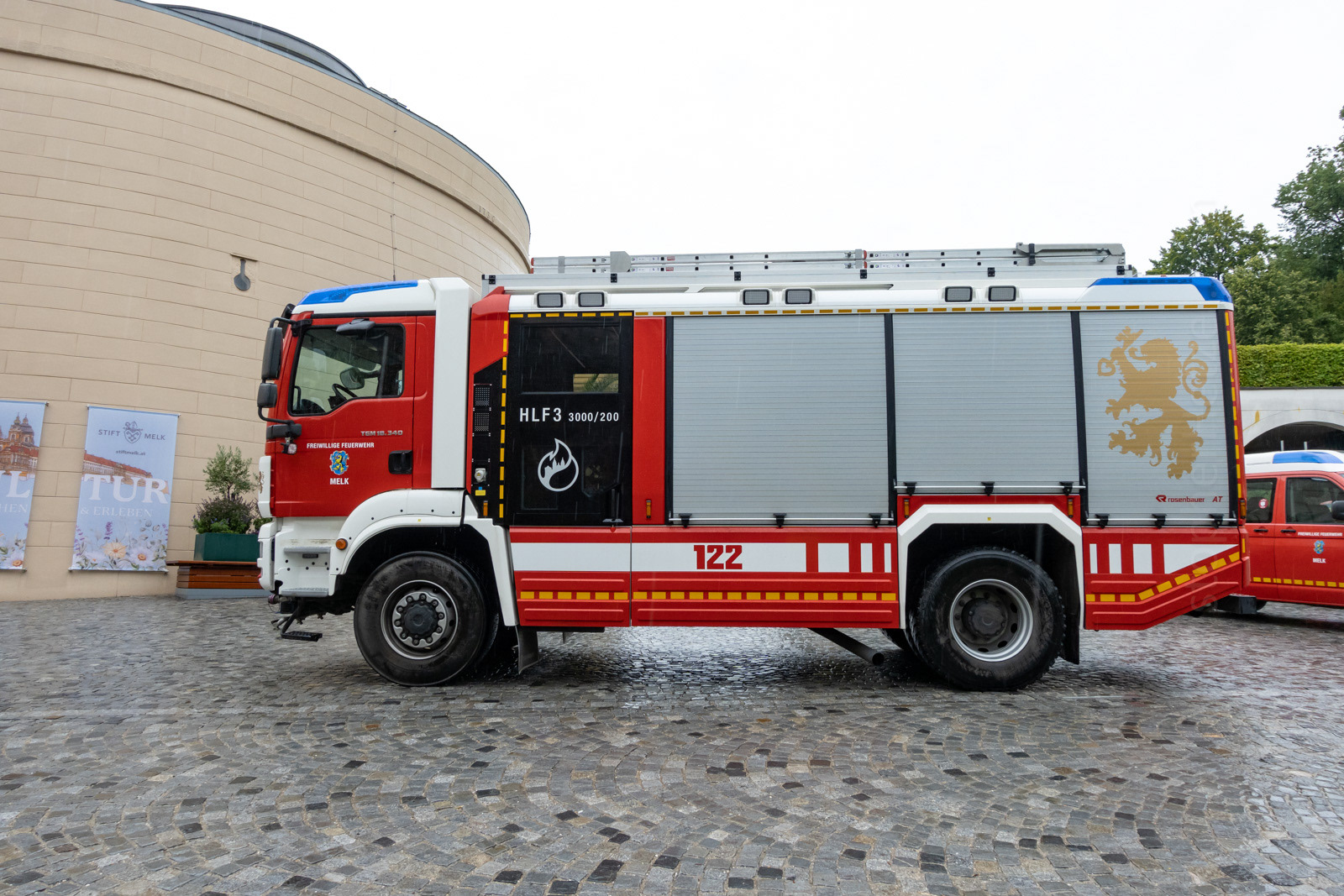
A local firefighting detachment was having lunch at the café that day.
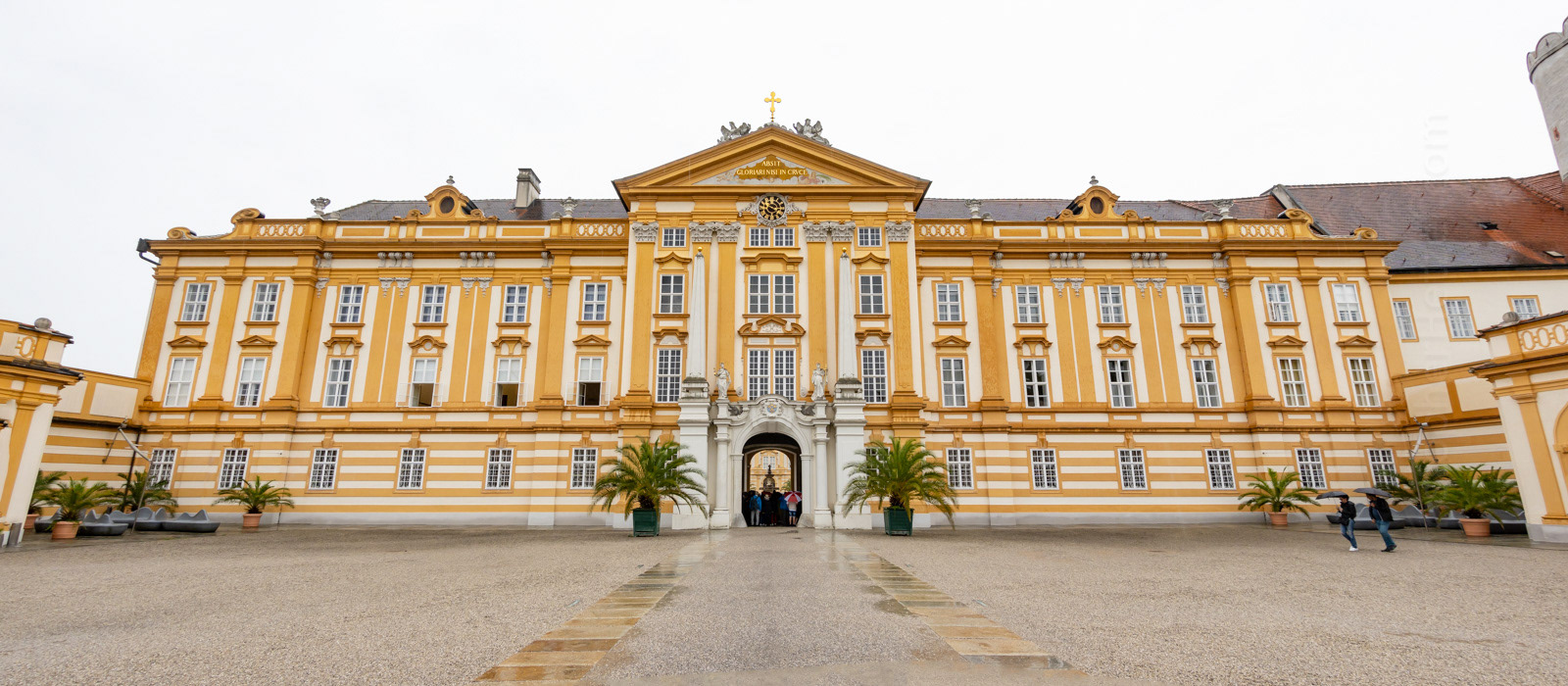
St. Benedict's Hall from the Gatekeeper's Courtyard.

A view of St. Benedict's Hall from the Gatekeeper's courtyard.
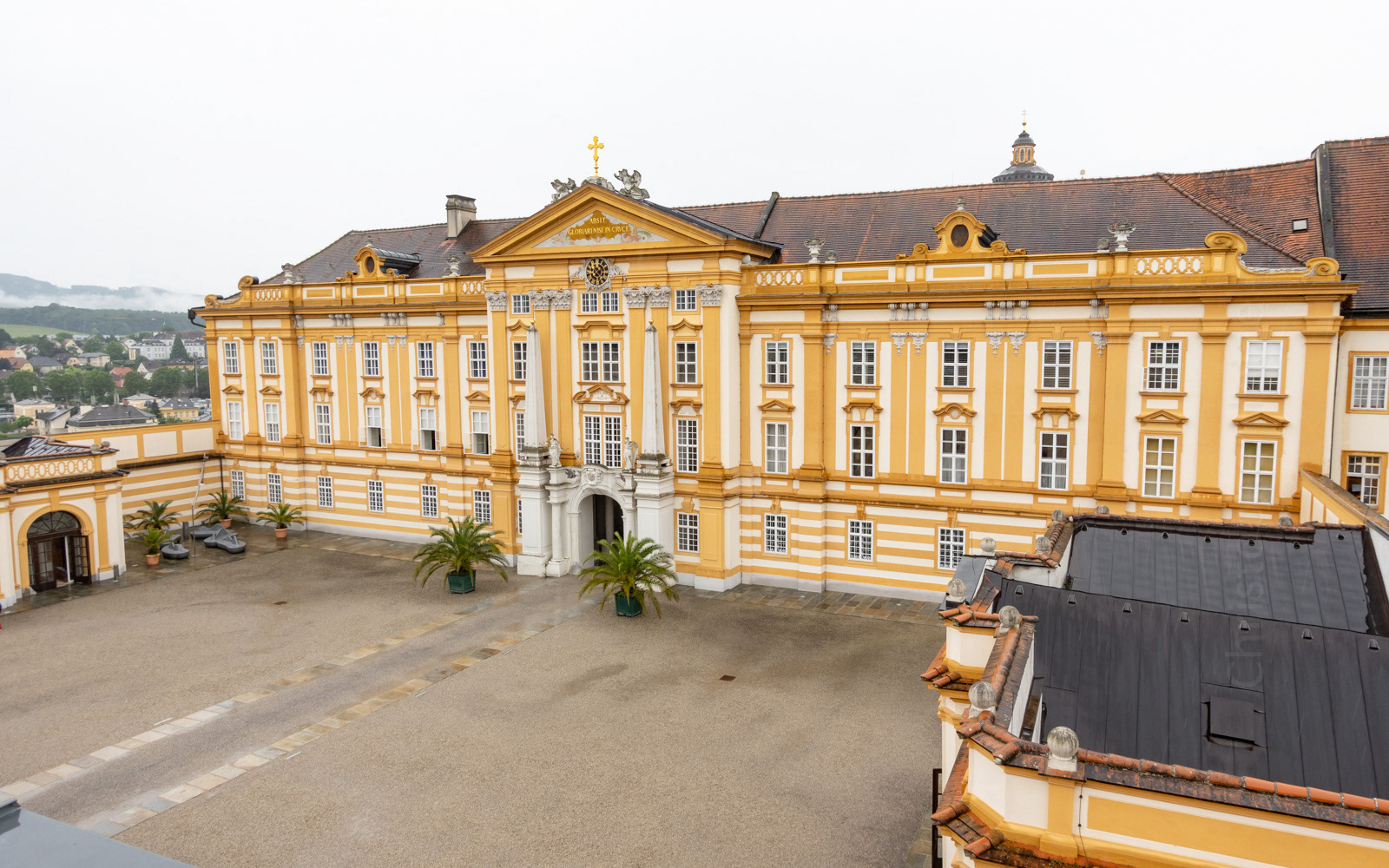
St. Benedict's Hall and the Gatekeeper's Courtyard, viewed from the top of the eastern bastion.

The front of the Abbey church.
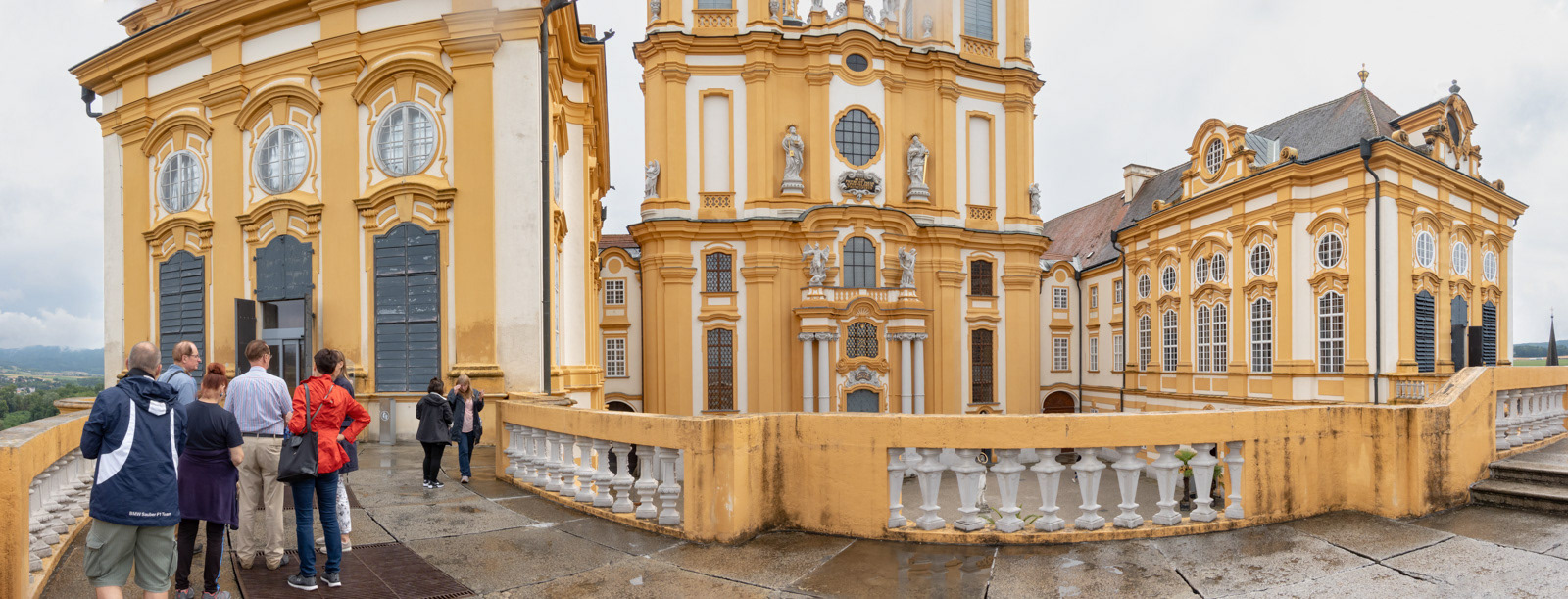
A somewhat distorted panorama, showing the Abbey church in the center, flanked by the Imperial apartments on the right and the monastic library on the left. The river overlook is immediate behind me.
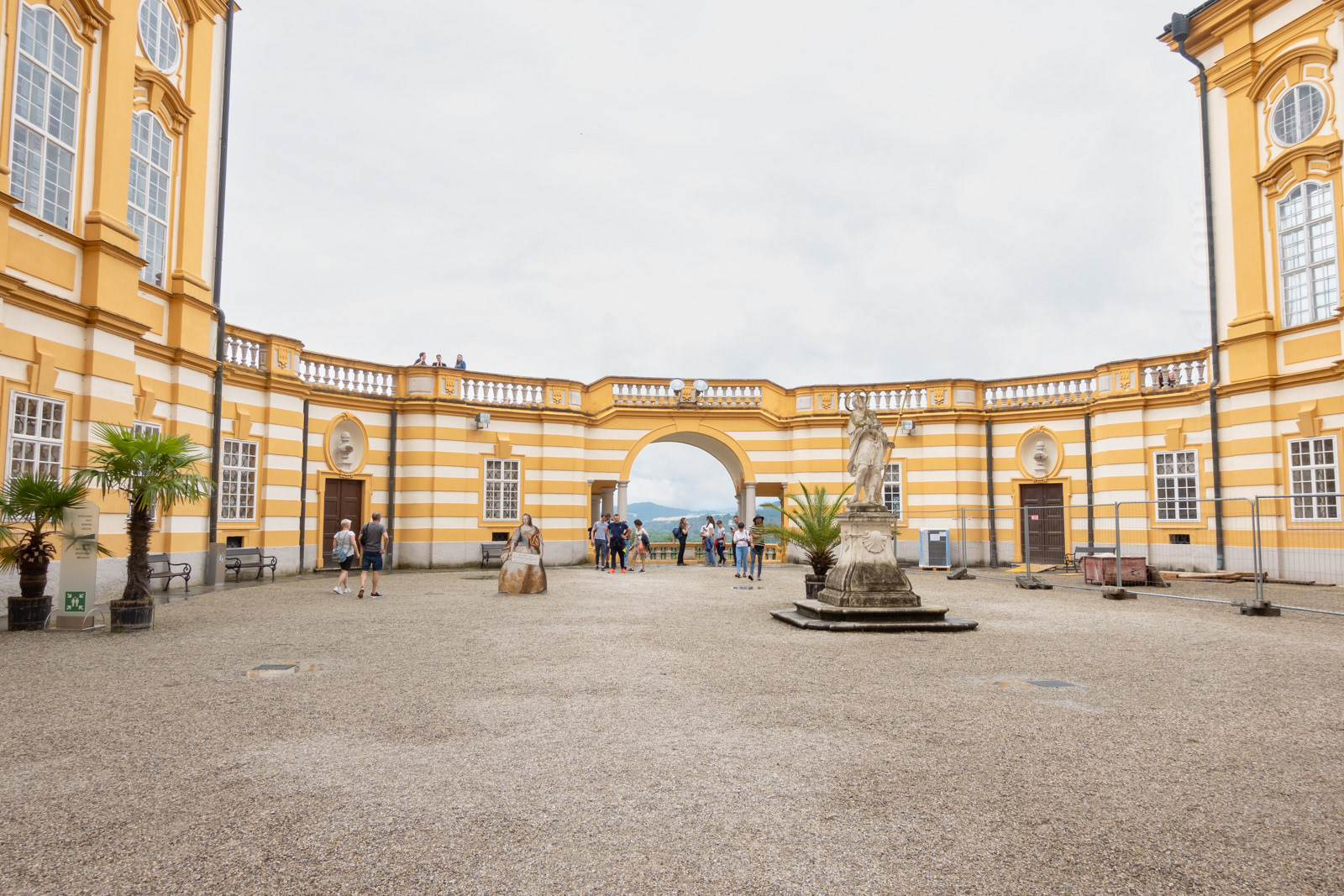
In the courtyard in front of the church, dedicated to St. Colomon, whose statue is in the center. The river overlook is in the center.
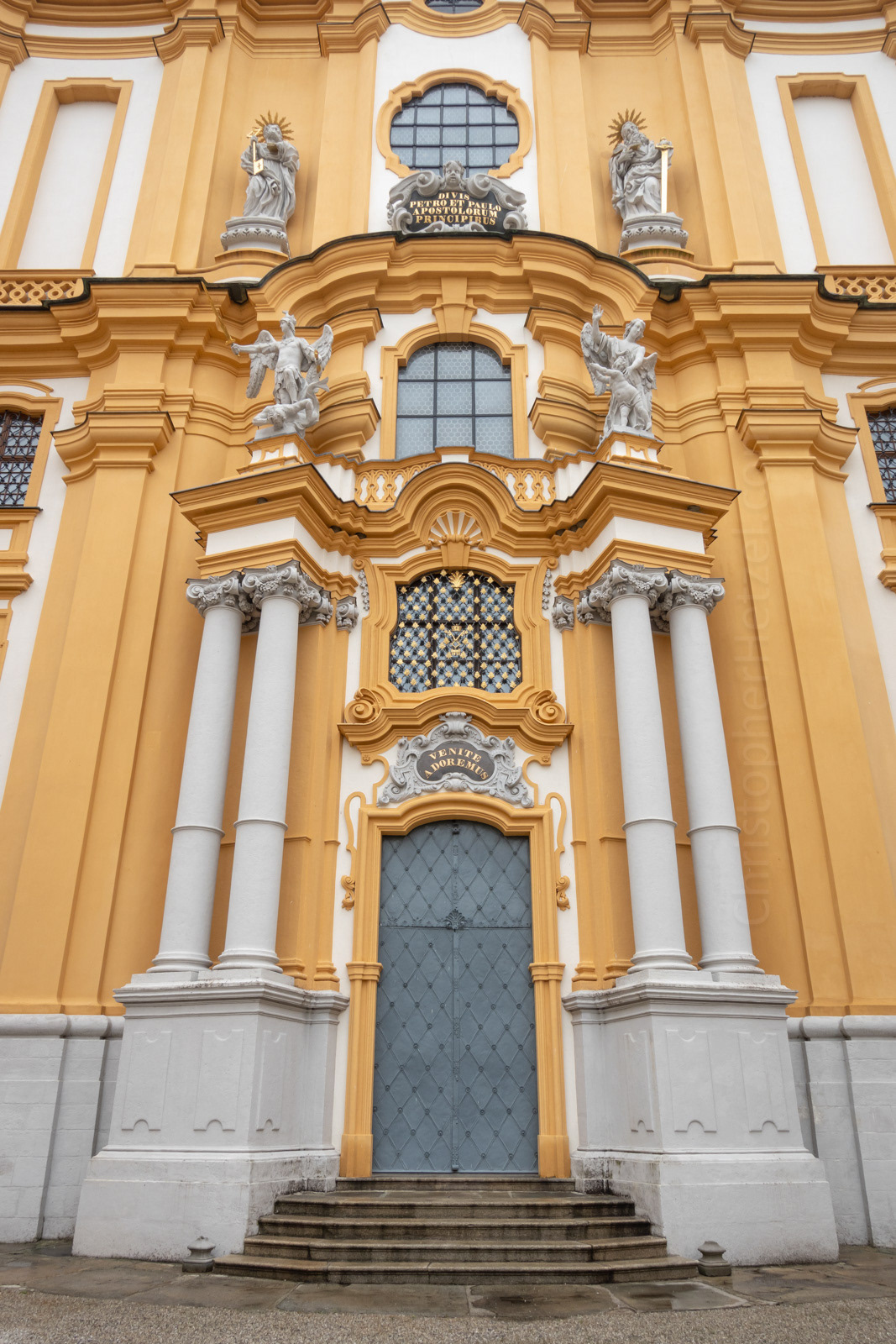
Entrance to the church.
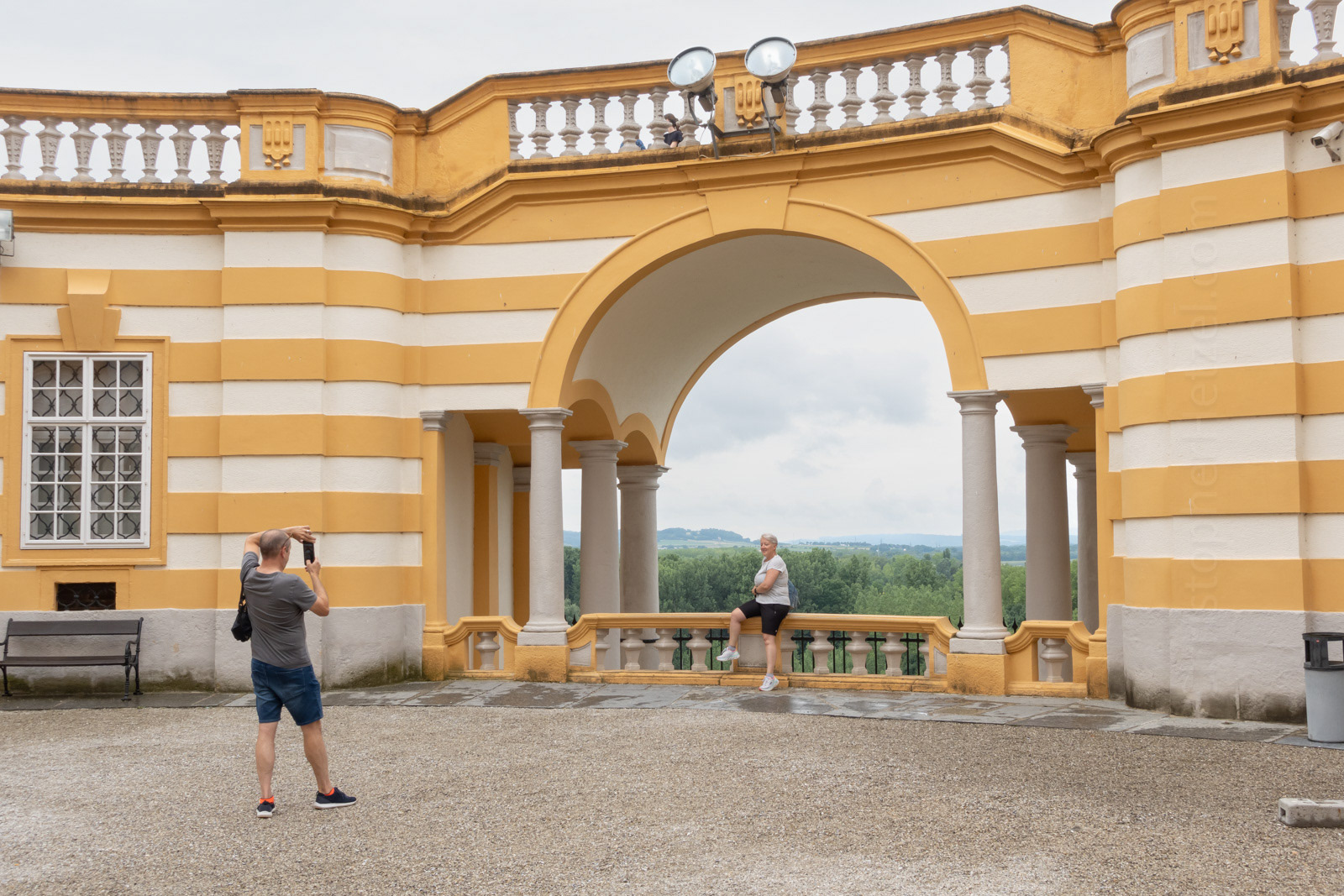
River overlook from St. Colomon's courtyard, a popular place for photos.
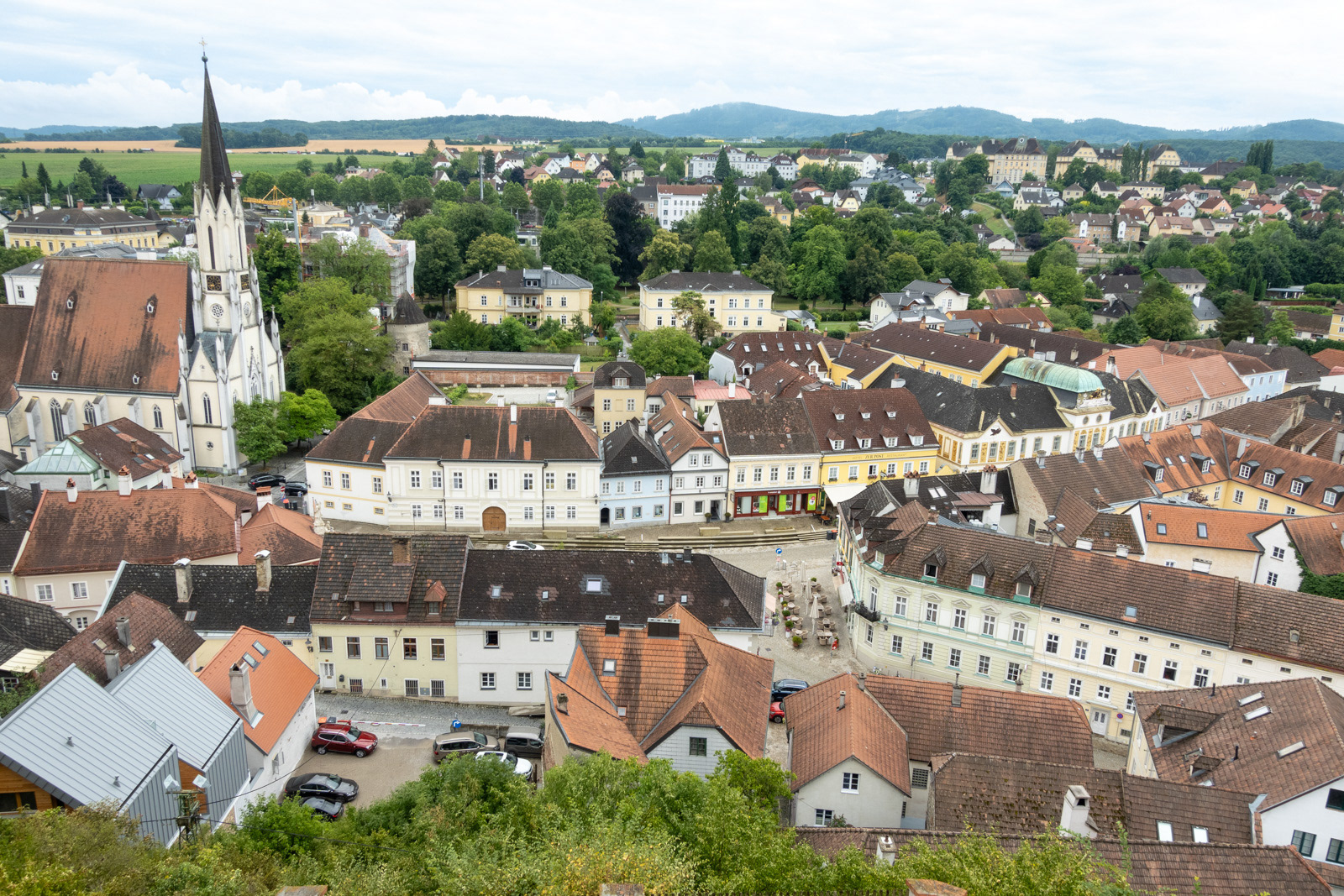
Overlooking the town of Melk.

The space between the church and the Imperial apartments.
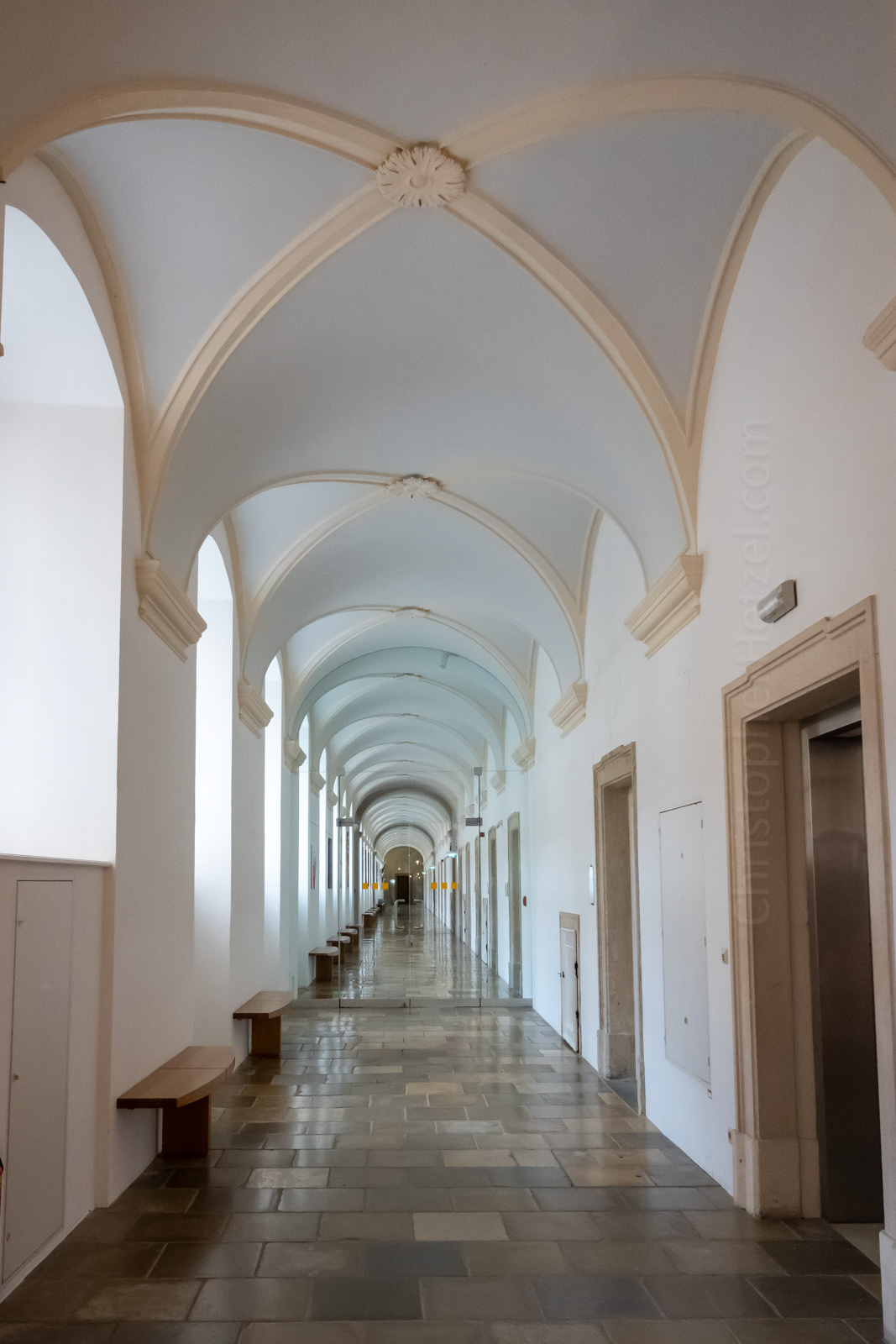
A corridor in the Imperial apartments block.
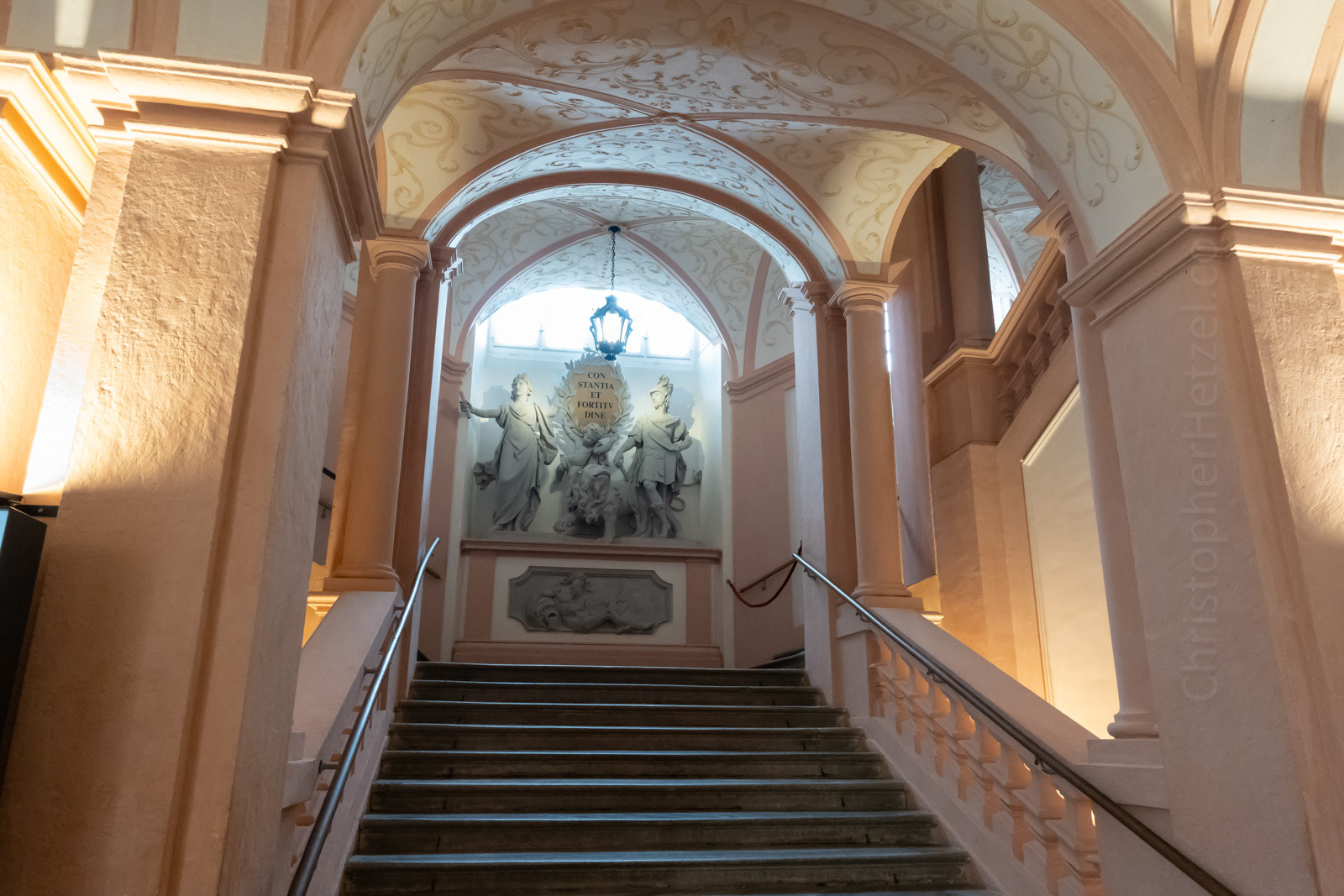
The grand staircase to the Imperial apartments.
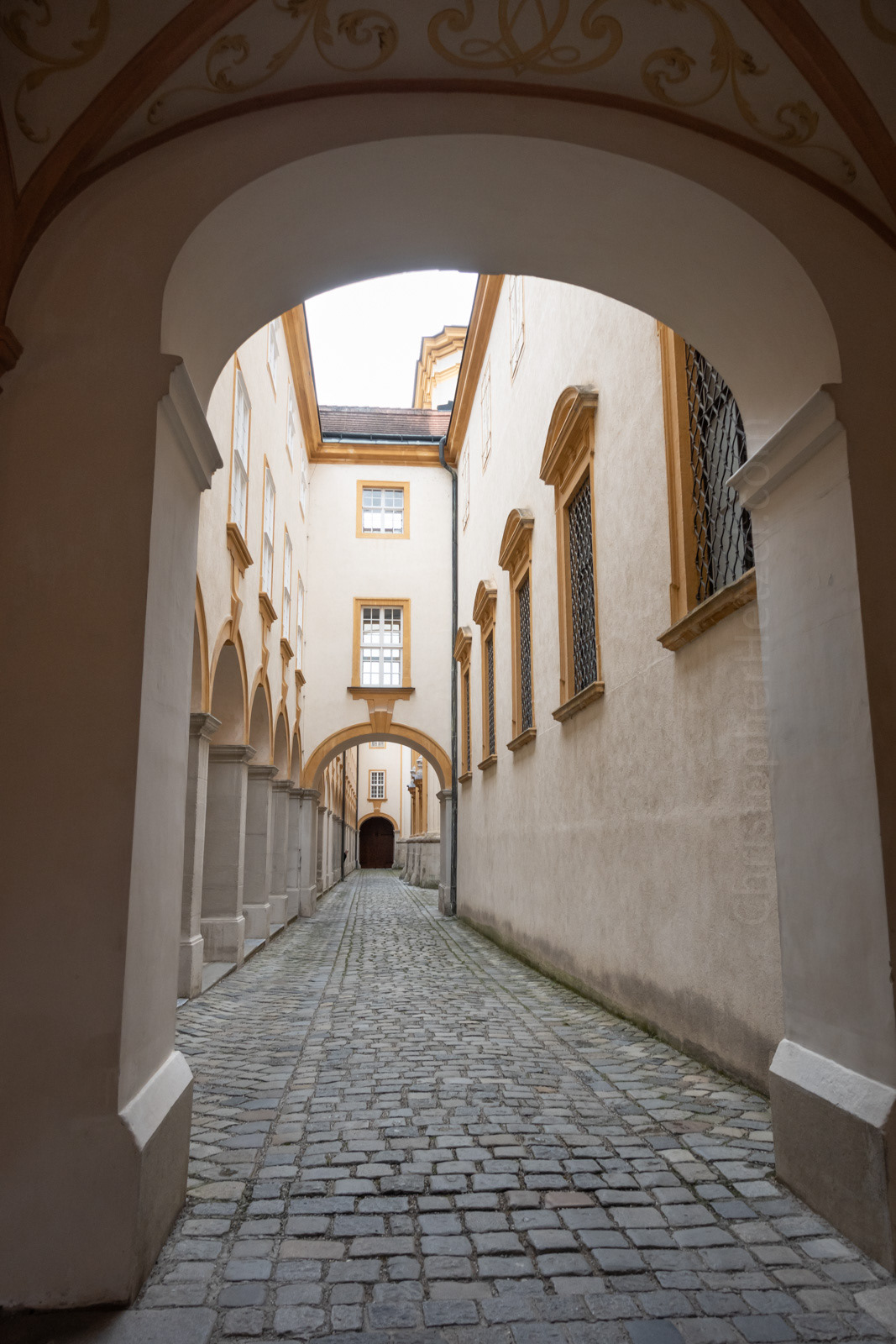
The exterior space between the church and the Imperial apartments.
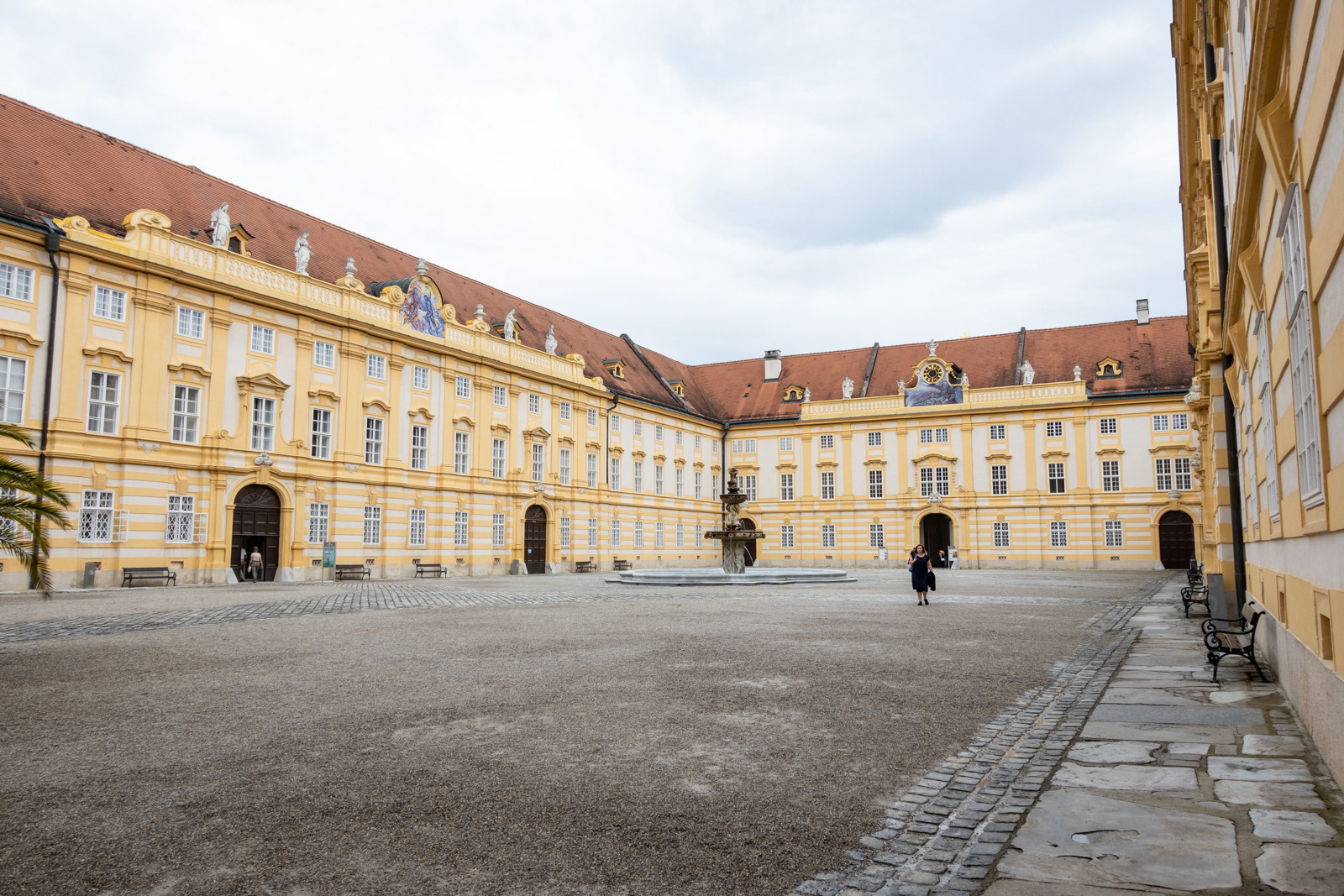
Prelate's Courtyard
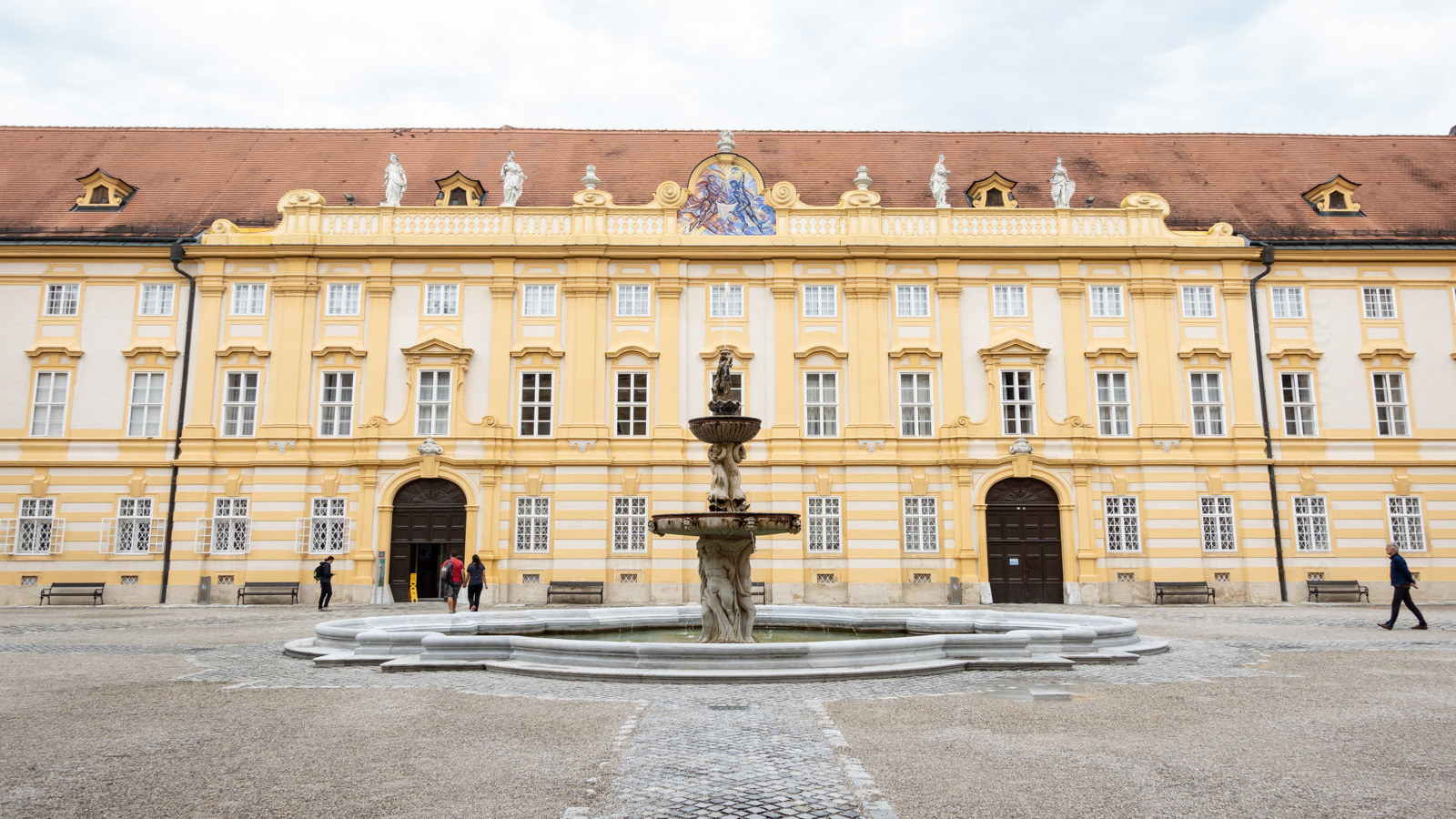
Prelate's Courtyard
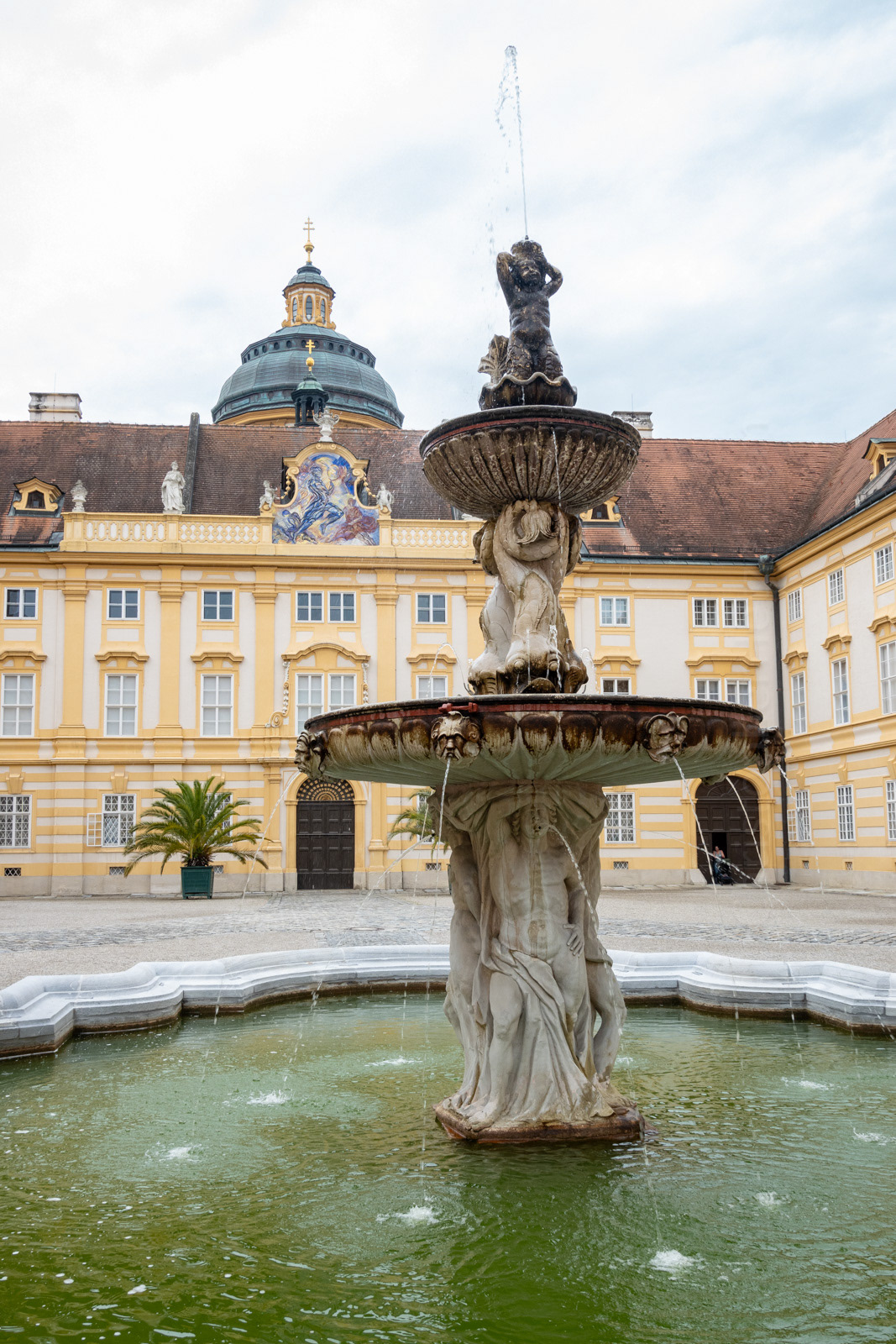
Fountain in the middle of the Prelate's Courtyard.
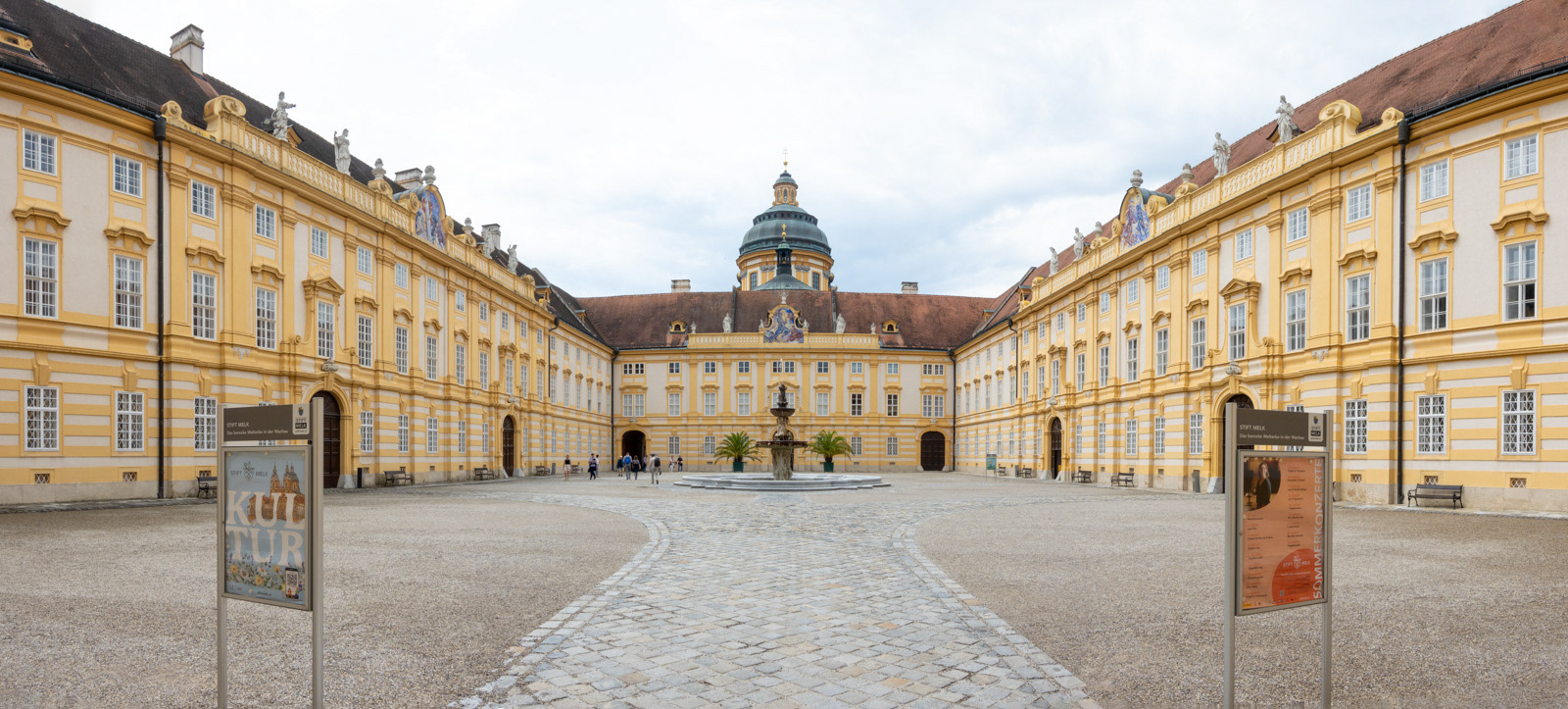
Prelate's Courtyard
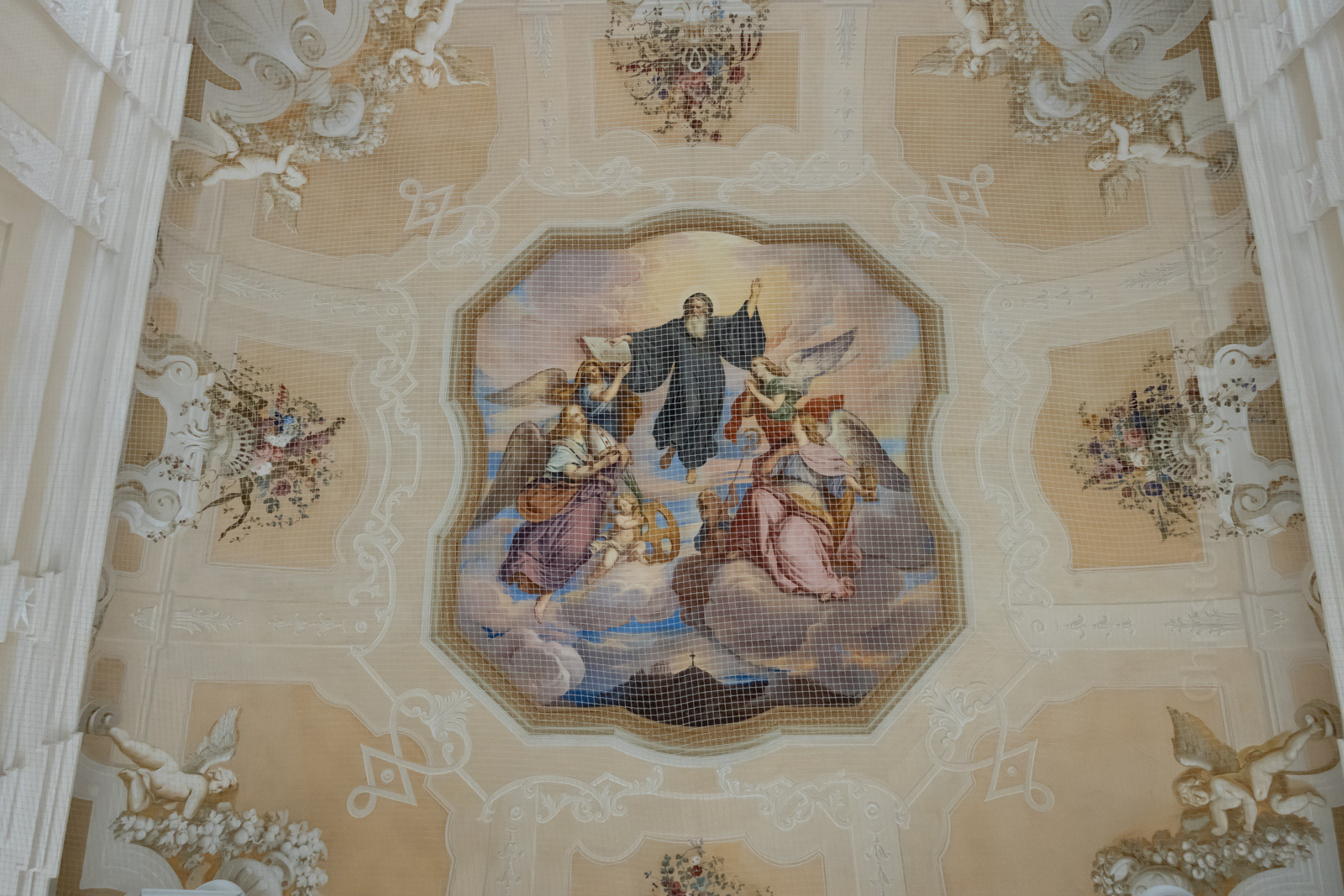
Ceiling murals in portal through St. Benedict's Hall.

A view of Prelate's Courtyard from the St. Benedict's Hall portal

Ending our tour, by leaving through the front gate. The front gate from the Gatekeepers courtyard.
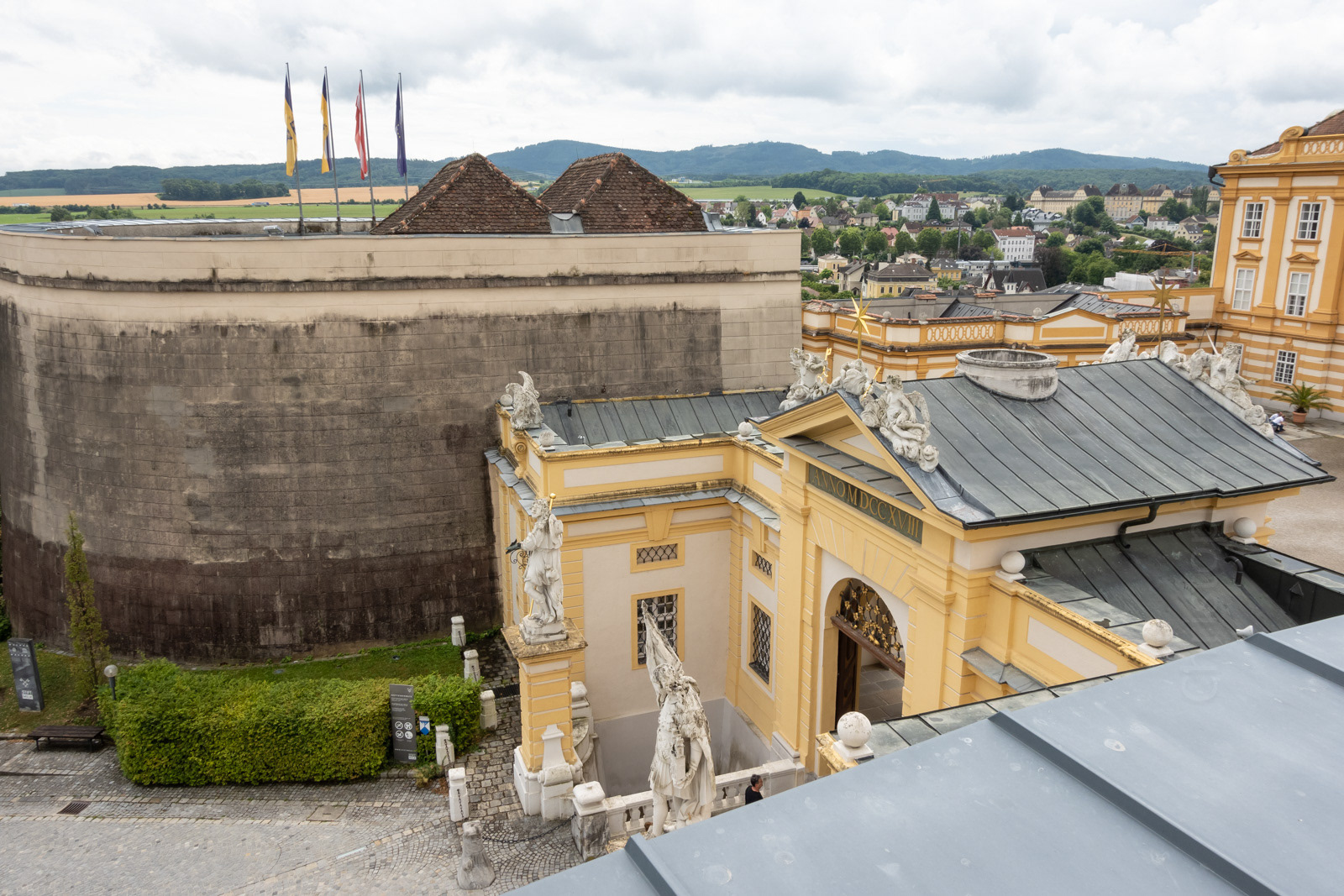
The Abbey Gate, viewed from the east bastian.

St. Benedict's Hall and the Gatekeeper's Courtyard, viewed from the top of the eastern bastion.

The monastery school is located in this portion of the Abbey. The round town is also one of the oldest structures on the site.

Main Gate
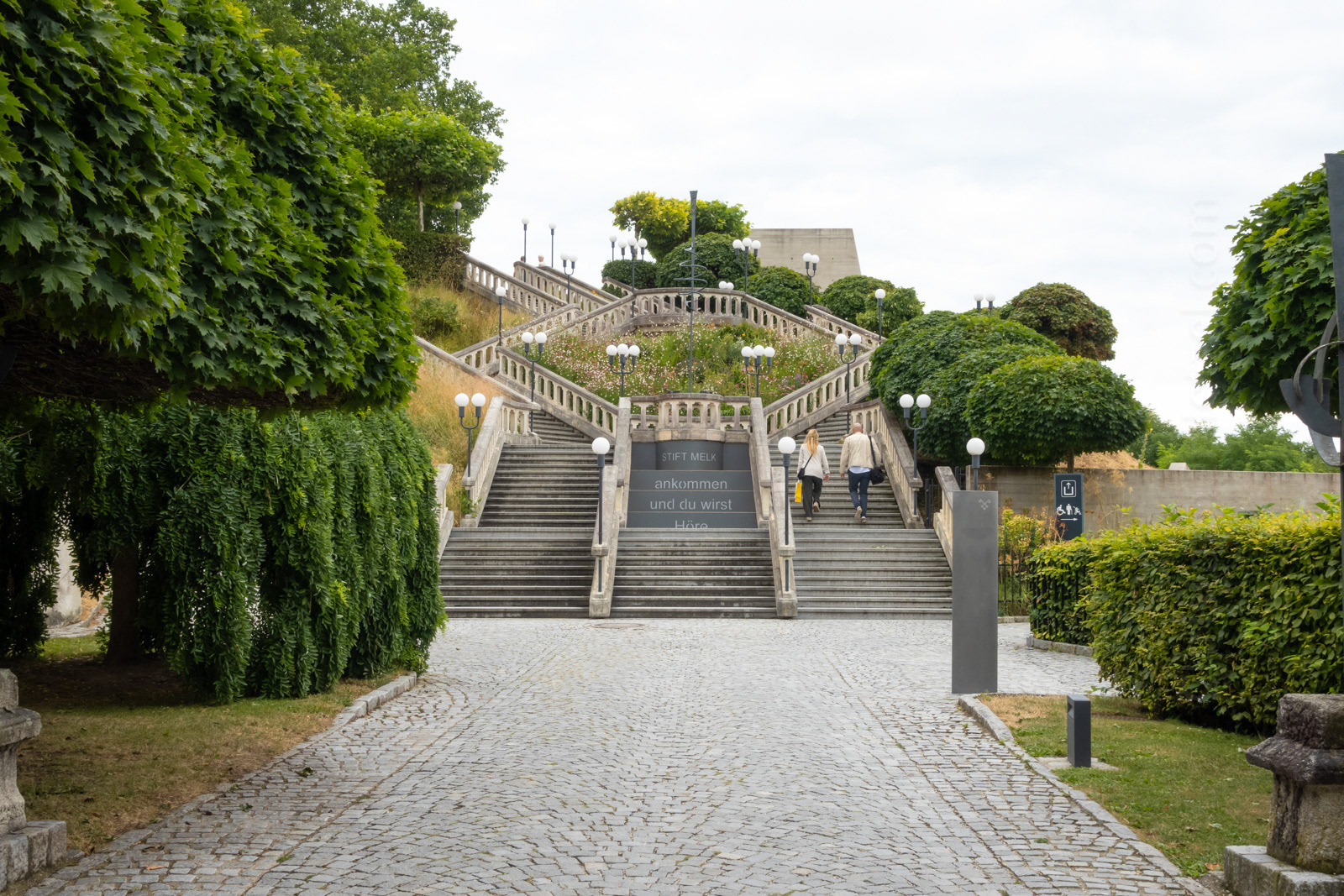
Staircase to the parking lot.
Return to Austria
